How five inspiring leaders are handling well-being with care P10







STREAMLINE your pre-service, post-service, and even post-adjudication work ows like a revenue cycle Pro. Learn how Availity Essentials Pro consolidates your entire revenue cycle and gets you PAID FASTER with: Make Availity Essentials Pro your end-to-end clearinghouse and total revenue cycle solution. Learn more at Availity.com/EssentialsPro Denial management and prevention
claims editing All-payer electronic claim attachments
EDI enrollments Integrated authorizations work ow PM/EHR system integration features and so much more!
Automated
Enhanced

“The one saving grace of all of this was that as a company, and as a society, we were all going through this together.”
— Amanta Mazumdar
P10
Contents 3
Sheila Barabad Sarmiento
in this issue
The Issues
Throughout her career, Sarah Nicholson has worked to create HR strategies that focus on listening to employees and making sure they know they’re valued 68
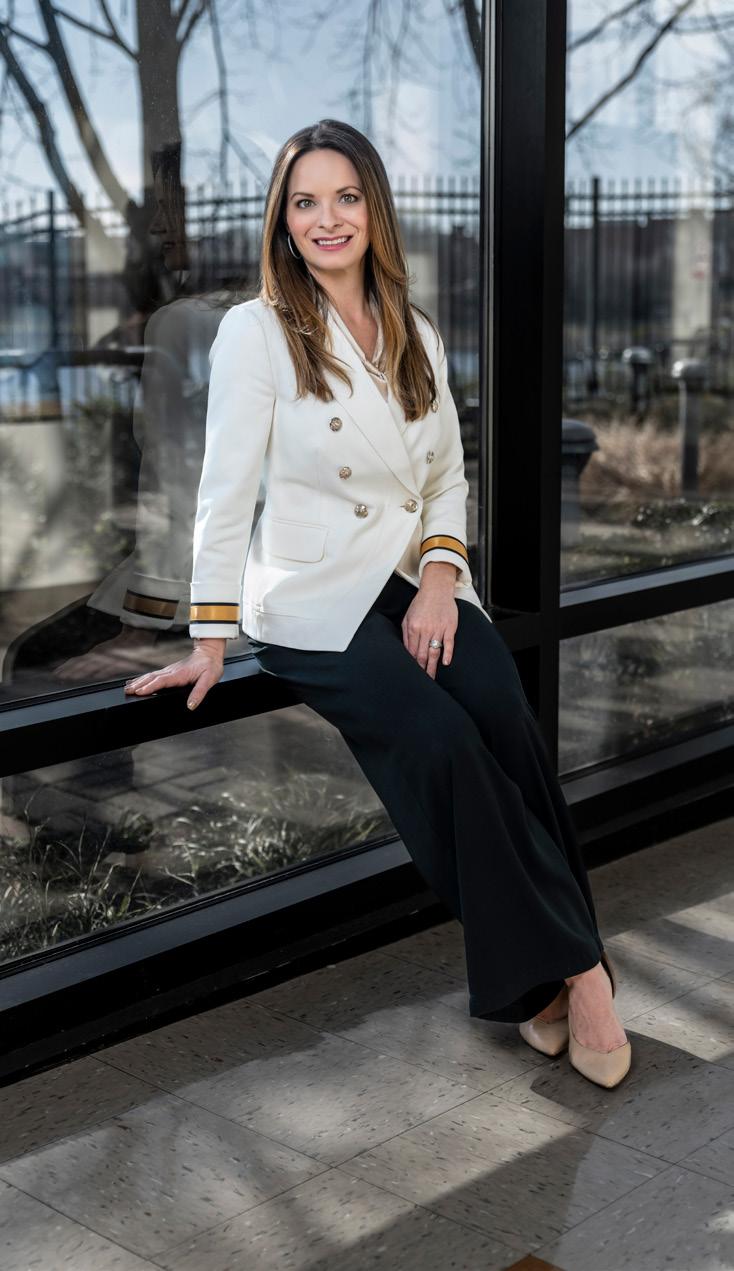
Mark Adams finds a role at Weill Cornell Medicine that draws on both his medical and legal training 72 ▶

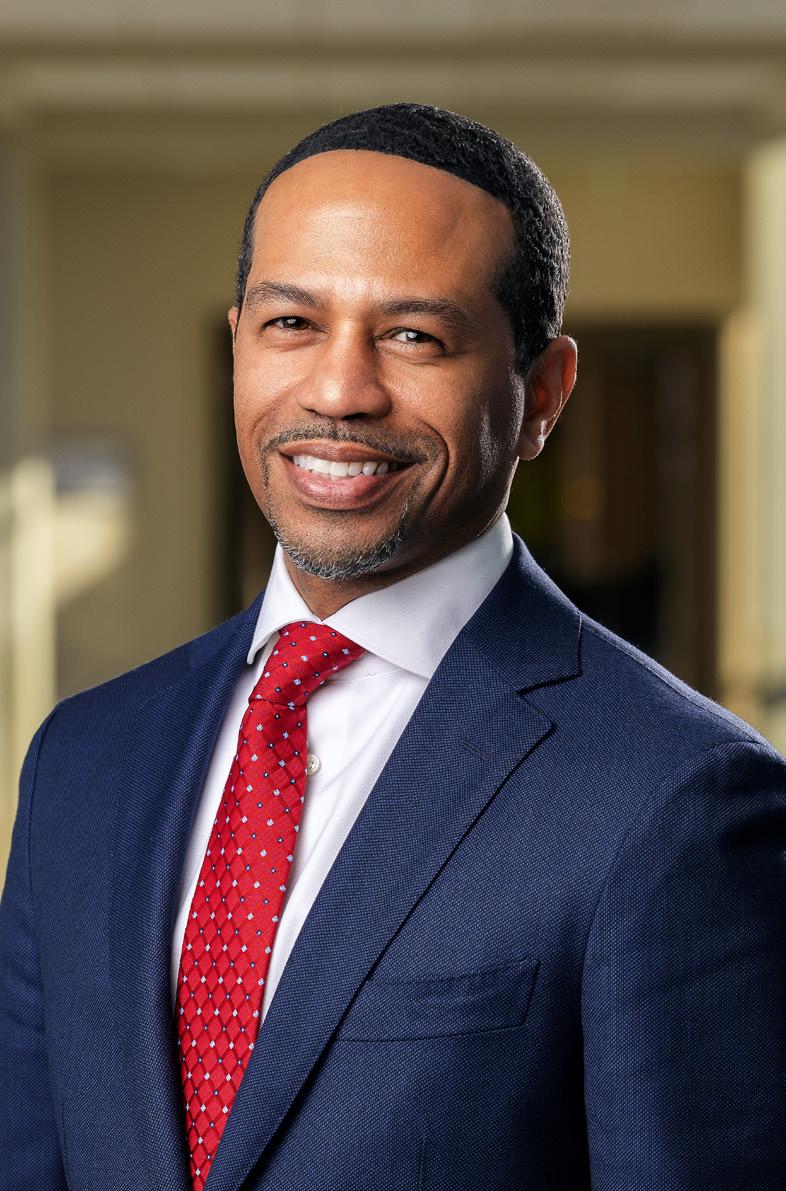
Hospital for Special Surgery’s Doug Leach connects researchers and innovators with the business leaders who can bring their new ideas to the marketplace 78
The Path
When her plan to work in healthcare fell through, Lauren Poe discovered her passion for healthcare administration 40
Amy Beales uses nontraditional methods and best practices from other industries to find, recruit, and retain the best talent at Children’s National Hospital 44 ▶
At Roche Diagnostics, Suja Subramaniam is working to build, protect, and enforce the company’s patent portfolios 50
4 AHL
Kenson Noel/Children’s National Hospital (Beales), Patricia Kuharic (Adams), Courtesy of Atlantic Health System (Kinsey)
The Reason
After thirty years working in benefits, Amy Sheldon reflects on changes she’s seen in the field and attitudes about HR that she’s helped to influence 84


Michael Kos continually strives for greater efficiency and better outcomes at Memorial Health, where he works to streamline its complex revenue cycles 88
Three years after launching Atlantic Health System’s first official DEI program, Chief Diversity Officer Armond Kinsey can see the results everywhere he looks ◀ 92
On the Cover
The Business
Janet Monaco creates personalized benefits and well-being at the George Washington University ◀ 98
The wide range of international work Deep Sagar does as part of Cipla’s legal team keeps him engaged as the company continues to expand 102
At Seattle Children’s Hospital, Greg Beach has worked to develop innovative supply systems that save time on the front line and provide quality care to patients 106
The Impact
At Thermo Fisher Scientific, Kenya Williams uses her degrees in biology, public administration, and law to help the life sciences company protect its valuable brands ▶ 120
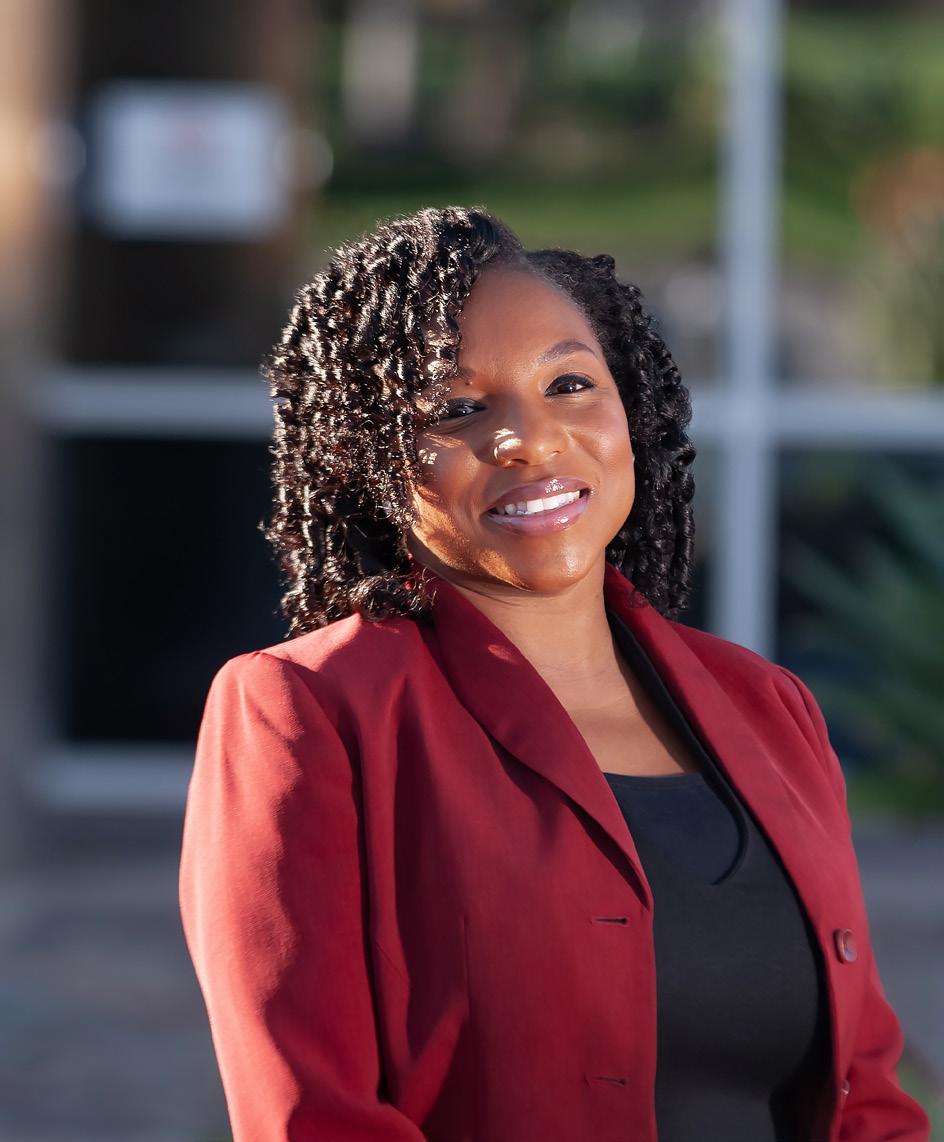
Patrick Curry develops Omada Health’s compliance department and emphasizes the importance of building partnerships to ensure trust between business leaders and his team 126
Leslie Whitehorne overhauls efficiencies and helps her team stick to better and more fulfilling work at Mako Medical 132
Courtesy of The George Washington University (Monaco), Courtney Jerome Williams (Williams)
Our hand model Shannon Borner
Contents 5
photographed by Sheila Barabad Sarmiento
Masthead
CREATIVE
Editorial Manager
Frannie Sprouls
Managing Editor
Jaylyn Bergner
Editors
Melaina K. de la Cruz
Sara Deeter
Michele Cantos Garcia
Brittany Farb Gruber
Julia Thiel
Staff Writers
Zach Baliva
Billy Yost
Contributing Writers
Lucy Cavanagh
Will Grant
Frederick Jerant
Donald Liebenson
Claire Redden
Andrew Tamarkin
Art Director
Elena Bragg
Senior Designer, American Healthcare Leader
Vince Cerasani
Designers
Anastasia Andronachi
Rebecca Kang
Senior Photo Editor & Staff Photographer
Sheila Barabad Sarmiento
Photo Editor & Staff Photographer
Cass Davis
Special Projects Editor
Sara Deeter
Creative Production Coordinator
Melaina K. de la Cruz
CORPORATE
CEO & Publisher
Pedro A. Guerrero
President, Group Publisher
Kyle Evangelista
Chief of Staff
Jaclyn Gaughan
SALES
Sales Directors
Justin Davidson
Stu Ziarnik
Manager, Onboarding Sales & Development
Hannah Tanchon
Lead Recruiter, Guerrero Search
James Ainscough
Senior Director, Corporate Partnerships & DEI Solutions
Krista Horbenko
Digital Product Manager
Aleksander Tomalski
Director, Talent Acquisition & Engagement
Haylee Himel
Talent Acquisition Managers
Josie Amidei
Jordyn Gauger
Content & Advertising Managers
Ashley Alcock
Megan Apfelbach
Maddie Keeler
Annie Peterson
Drew Thomas
AUDIENCE & ENGAGEMENT
VP, Hispanic Division and Head of Audience & Engagement
Vianni Lubus
Director, Events
Jill Ortiz
Events & Marketing Manager
Ashley Parish
Communications & Engagement Manager
Cristina Merrill
Associate Manager, Digital Marketing
Aliana Souder
OPERATIONS
VP, Finance
David Martinez
Director, Circulation
Stacy Kraft
Staff Accountant
Natallia Kamenev
Senior Director, Client Operations
Cheyenne Eiswald
Senior Manager, Client Services
Rebekah Pappas
Manager, Client Services
Brooke Sackett
Director, Client Services–Corporate Partnerships
Taylor Frank
Office Manager and Administrative Assistant
Emiko Daniel
AHL Magazine® is a registered trademark of Guerrero, LLC.
Facebook: @ahlmagazine
LinkedIn: @american-healthcare-leader
Twitter: @AHL_Magazine
©2022 Guerrero, LLC guerreromedia.com
1500 W. Carroll Ave., Suite 200 Chicago, IL 60607
Reprints
Reprinting of articles is prohibited without permission of Guerrero, LLC. Printed in China. For reprint information, contact Reprints & Circulation Director Stacy Kraft at stacy@guerreromedia.com.
6 AHL
From the Editor
Humans do not lead compartmentalized lives.
We don’t move through experiences with such a stoic presence as to address each with a separate poise and consideration, unaffected by whatever circumstances preceded. While we change personas—executive, parent, loved one—and align our jargon, attire, and focus to create a convincing character, we don’t possess those hard divides internally. We are each identity simultaneously.
As a multifaceted, multitudinous being required to operate across infinite contexts (simply by existing), you have a lot happening internally, especially with the COVID19 pandemic adding stress and challenges to every aspect of life.
But the pandemic forces a much-needed dialogue around a truth that, as a society, we can no longer ignore: the need to care for the whole person. Not simply a matter of physical health, wellness must extend to all the essential areas recognized by experts: occupational, financial, mental, and social.
Our conversations with thought leaders in our feature section (p.10) underscore this evolving trend. In recent years, employees and employers have prioritized efforts that begin and end with a clear focus on compassion. Comprehensive wellness packages providing such benefits as parental support programs, financial planning assistance, and mental health resources matter to employees. And unsurprisingly, they make a marked difference in overall job satisfaction.
Logic suggests that feeling balanced in each area and caring for your total self leads to a greater quality of life. Naturally, in this state, the mind produces better and farther-reaching thought patterns. Solutions that reshape potentiality and drive creativity. (Something for employers to consider.)
This not only produces exponential outcomes at work, including elevated experiences of company culture, but also gives way to greater personal fulfillment outside the office. This of course only perpetuates—fostering environments and opportunities of untold brilliance.
All accomplished by recognizing that total wellness—or wholeness—matters.
Jaylyn Bergner Managing Editor

Sheila
Barabad Sarmiento
Editor’s Letter 7
8 AHL
We look to the hands behind the scenes carrying the wellness conversation

The Feature 9
Photos by Sheila Barabad Sarmiento and hand model Shannon Borner
Amanta Mazumdar helps Hilton employees navigate a challenging period with grace, empathy, and humanity
By Billy Yost
Portraits by Sheila Barabad Sarmiento
SEEK SILVER LININGS AND SOLUTIONS
10 AHL

AND SOLUTIONS The Feature 11
COVID-19 hit hard. Increased stress levels related to the pandemic, work, and home. Organizational trust. Job satisfaction. Selfesteem. Mental health, as a whole, across not just the country, but the world. An impact we’re still trying to process, and a comprehensive understanding that conceivably feels a decade away. But the immediate numbers are staggering.
For starters, a near complete shutdown of travel equated to a significant drop in hotel occupancy. As a direct result, in March of 2020, the American Hotel and Lodging Association forecasted 45 percent of all hotel jobs would be eliminated in a matter of weeks. Over eight million individuals.
Hilton CEO Chris Nassetta affirmed the challenges of the global pandemic via a Q&A on the company’s official website.
“We had to make really heartbreaking decisions about our team while navigating our business through an unprecedented standstill in global travel,” the CEO wrote in 2020.
The industry not only faced the temporary loss of countless jobs, but also the exponentially heightened stressors of those remaining employed. Studies published by the International Journal of Hospitality Management (February 2021) and The National Center for Biotechnology Information (September 2021) both
sought to quantify the effects of working from home and additional COVID-19 stressors on job performance, health, burnout, and commitment.
Expectedly, the results painted a fairly clear picture somewhere between bad and terrible. The amount of stress, especially new stress, created a feedback loop of difficulty that only snowballed over time.
Amanta Mazumdar, vice president of benefits at Hilton, shared the same challenges as his colleagues and team. Balancing life for a family with two young children at home, while at the same time rising to the demand for benefits professionals to evolve programs at a lightning pace during the pandemic.
But Mazumdar assumed the challenge of his career by leading with his humanity, positivity, and an instinctive desire to do everything possible for those struggling through the defining moment of our collective era.
“I appreciate the direct impact we can have on our team members here,” Mazumdar explains. “While it was challenging, COVID presented us with the opportunity to do some really important work.”
The benefits space wasn’t one Mazumdar came to instinctually. Early on, the engineer-by-trade worked on designing software for large diagnostic imaging machines for GE. It wasn’t until being tasked to consult with the healthcare organizations using the equipment that the young professional recognized the need for a career evolution.
“I really loved working with hospital systems, with administrators, and with patients,” Mazumdar remembers. “I spent quite a few years working with integrated delivery networks to improve their operations and provide better care more efficiently.”
After earning his MBA at Kellogg and building out more experience in the pharma and consumer health
12 AHL
industries, Mazumdar joined Hilton in 2017 in an HR strategy role. A few years later, he landed in his current role. And while it’s his first company in the hospitality space, Mazumdar already inspires transformational change and holistic thinking about what employers can do for their people.
With the onset of the pandemic in the United States, Mazumdar and his team addressed the immediate employee concerns as quickly as possible. Their multifaceted and comprehensive approach essentially focusing on two main areas: the practical and the mental.
The Practical Solutions
When the pandemic first hit, regular, every day living changed drastically, and with it the needs and priorities of the team members Mazumdar serves. To adjust, Hilton made several conscious efforts to support:
1. Hilton partnered with CVS Caremark to alleviate staff-expressed apprehension regarding the in-person pick up of maintenance and other medications during the pandemic height. By waiving delivery charges, the collaboration ensured employees received their necessary prescriptions safely, correctly, and worryfree.
2. The benefits team increased the flexibility of the 401(k). They understood the economic strain and uncertainty many Americans faced when the world changed drastically.
3. Additionally, Hilton created an internal website that aggregated CDC guidelines, COVID testing sites, and onsite clinic information for employees. Basically,
a one-stop location for information and help. As vaccines became more available in 2021, the hubsite also served as a critical landing point for vaccine resources, including a webinar with two leading physicians.
“These were just very practical and direct measures aimed at helping our team during a challenging time,” Mazumdar explains. “The one saving grace of all of this was that as a company, and as a society, we were all going through this together.”
“We’re looking forward to doing some ambitious and really meaningful things to support our caregivers.”
The Feature 13
The Mental Consideration
Mazumdar also says that seeing many fellow team members working remotely in their homes reminded the entire company they weren’t just experiencing the lockdown as colleagues, but first and foremost as human beings. Everyone is handling a significant life challenge. This moved the benefits team, with critical support from leadership, to create more resources to support team member mental health and wellness. Their strategy focused on organizing existing resources, adding new ones where needed, and building a culture of dialogue around the topic of mental wellness. To execute on this strategy, the team took several actions.
1. First, along with the COVID hub, Mazumdar’s team built out another internal hub for team members that organized existing resources, including articles, podcasts, and links to its employee assistance plans. “As part of the site, we have an area where our team members can post videos about different mental health topics,” he explains. “We have over one hundred videos ranging from how people wind down at the end of the day to people explaining why mental health is important to them.”
2. From there, Hilton introduced several new resources, including an app built by Thrive Global. The mission to “end the burnout epidemic with sustainable, science-based solutions that unlock employee performance and enhance well-being.” And, as it accommodates over eleven languages, it’s available to all team members globally.
3. Additionally, the company offered personal, 1:1 coaching with a dedicated mental health professional, available to meet with employees, spouses, and adolescent children to work through mental health topics. “Our counselor has been amazing,” Mazumdar says. “You can email or call her directly. There is no 1-800-number. You set up a time and meet with her either in person or
70%
virtually. This program has been one of the enhancements that I think has been most impactful.”
4. Finally, the team also worked with Thrive Global to create training for people managers to better support those colleagues needing extra help. Looking ahead, Mazumdar’s next major project seeks to address a huge population that so often gets overlooked: caregivers. “There’s a whole host of research out there that speaks to the strain that caregiving can have on an individual, and COVID just brought this to the forefront,” Mazumdar explains. “When we look at the data and superimpose our own employee demographics, we estimate that 35,000 of our employees probably fall into the group of individuals where caregiving can hinder their ability to be their best selves at work. As part of
Notes from the Frontlines
Amanta Mazumdar says that whenever he needs motivation, he simply pulls up the messages from employees around the country. The VP reads one moving account with a subject line simply reading:
“I want you to know that the Thrive Clinic saved my life.” Hilton’s new onsite clinic in Memphis was able to mitigate and stabilize a high-blood-pressure episode, as well as ensuring the continued treatment of its employee, checking in every step of the way.
“These are the things that keep me going,” Mazumdar says. “This is why I do what I do.”
14 AHL
of workers enrolled in wellness programs report higher job satisfaction than those not participating (Aflac, 2019)
our next frontier of innovation, we are looking forward to doing some ambitious and really meaningful things to support our caregivers.”
Mazumdar knows those he supports aren’t through the pandemic yet. Nobody is. But the signs are improving, and the VP lists countless silver linings he and his team found in the darkest of clouds. Between Q1 and Q4 of 2021, an employee survey jumped ten points up in response to the question: “I feel comfortable talking about my mental wellbeing with my manager.”
Teams feel more seen, connected, and supported, a fact recognized by key partners, such as Amazon Care’s General Manager Kristen Helton.
“We created Amazon Care to improve patient health by delivering high-quality care wherever and whenever needed,” she says. “Now more than ever, employers realize keeping today’s busy workforce healthy and safe at work is essential. We’re proud to bring our
Amanta Mazumdar VP of Benefits Hilton
patient-centric service to Hilton, offering their employees and dependents the absolute best combination of quality, convenience, and peace of mind.”
A result that proves to Mazumdar that Hilton’s expanding benefits program will long outlast the global pandemic. And that’s the kind of lasting change Amanta Mazumdar knows he can make in the everyday lives of people. AHL
Amazon Care gives employees and their families on-demand access to primary and preventative health care through visits with nurses, nurse practitioners, and doctors, 7 days a week, 365 days a year. We offer the same services as a traditional brick-and mortar-provider, including ongoing support for chronic conditions, referrals to specialists, plus coordination and continuity of care—whenever and wherever it’s convenient. When employees need in-person care, we’ll send a nurse right to their door (in select locations) or recommend an in-network provider. Learn more at amazon.care/for-employers
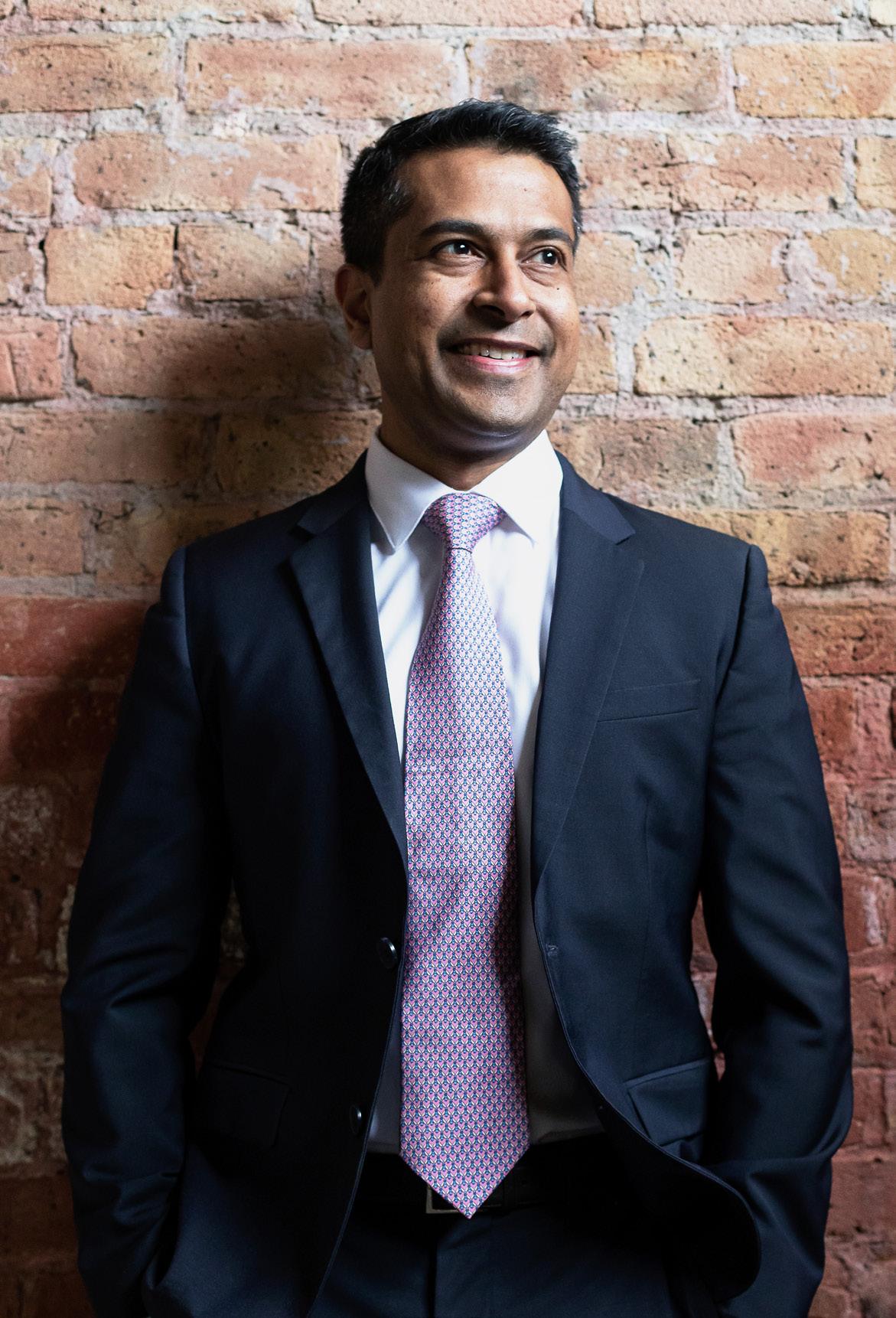
The Feature 15
Happy and healthy employees is not a stretch goal

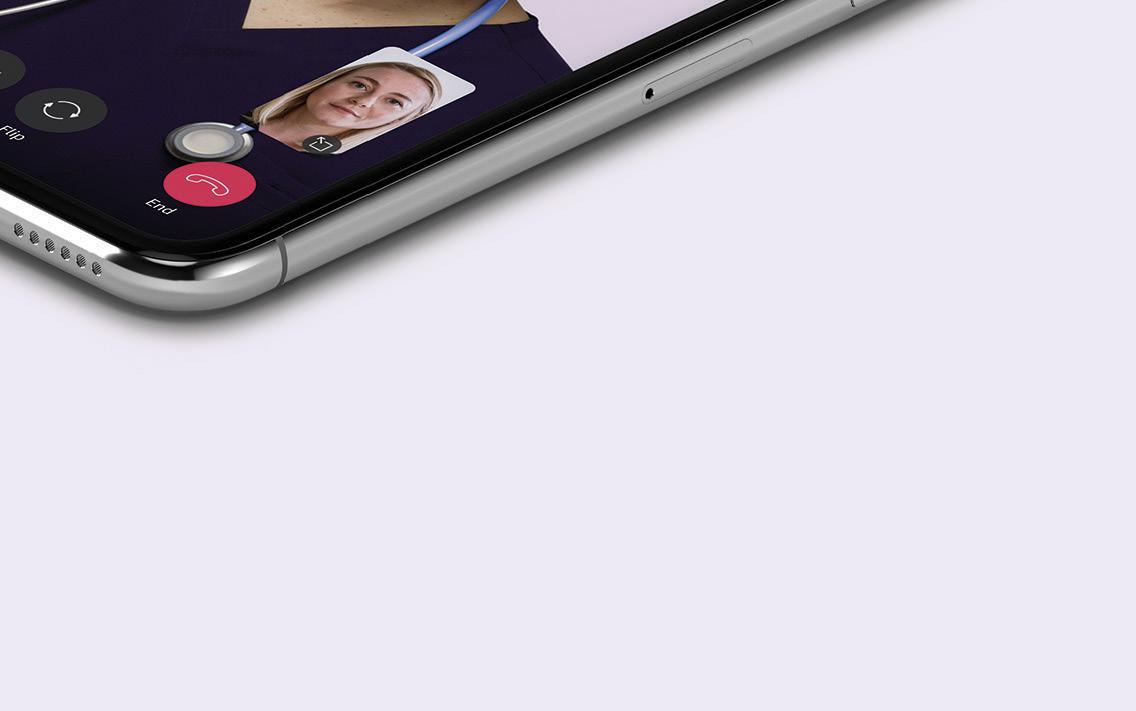






Learn how to make getting medical care for your employees fast and easy at amazon.care

TRADITION
INNOVATE FROM TRADITION

Over the past twenty-five years, Denise Murphy has watched the University of Notre Dame grow—and she’s worked to ensure that the HR department keeps up with that evolution
By Zach Baliva
The Feature 17
Milkshake Mass at Dillon Hall and home games at the House that Rockne Built make the University of Notre Dame special, but Denise Murphy had no idea she’d spend most of her career in South Bend, Indiana, when she stepped onto the campus in 1997. She joined the university to be part of another important Notre Dame institution: the office of human resources. Today, she’s senior director of compensation and benefits.
While most people know Notre Dame for its Catholic traditions, its athletic teams (which have won thirty-four national championships), its teaching and research (including the Mendoza College of Business and Keough School of Global Affairs), and its notable graduates (including Condoleezza Rice, Nicholas Sparks, and Joe Montana), Murphy says the HR department also stands out. “Our team really cares about making a difference for people, and we have evolved from a traditional to an innovative mindset,” she says. Murphy has had a front-row seat to that evolution. When she joined as manager of benefits, Notre Dame offered faculty and staff just basic HR programs. Over the last twenty-five years the university has grown in size, quality, and prestige by adding hundreds of professors and taking steps to increase research funding, endowment funds, operating budgets, and campus diversity.
The office of human resources had to grow in step with the university. “We could no longer be satisfied to provide a few basic programs,” Murphy explains. “We had to think more strategically and offer holistic solutions.” The nuanced shift made the office more mission driven, which fits with Notre Dame’s overall goals.
As Murphy progressed in her career at Notre Dame, she found several opportunities to work with others in her office to make a significant impact on the lives of staff, faculty, and their families. In 2010, her team started researching what those groups really needed to address related to child care, elder care, mental health, and wellness, among other areas.
Informal conversations and formal surveys helped the team gather information and ultimately led to a noteworthy project that Murphy says represents a major shift in the HR program—the Notre Dame Wellness Center.
The on-site medical center and pharmacy opened in 2012 to give faculty, staff, and their families access to quality healthcare services. Expert care providers at the clinic serve patients seeking primary care, lab services, physical therapy, wellness coaching, emotional well-being assistance, and other services.
While these clinics are common today, the idea was unusual ten years ago. Murphy and her team worked hard behind the scenes to build confidence and get buy-in. First, they did outreach events to show the local medical community how the wellness center would complement—and not replace—established physicians. They also reassured
18 AHL
 Denise Murphy Senior Director of Compensation & Benefits University of Notre Dame
Denise Murphy Senior Director of Compensation & Benefits University of Notre Dame
The Feature 19
Barbara Johnston/University of Notre Dame
users that all care records would be kept private and confidential from their employer. Premise Health, a third-party vendor, currently manages the Notre Dame Wellness Center.
In 2021, Murphy was named senior director of compensation and benefits and continued to guide the full strategy for current and retired Notre Dame faculty and staff. Along the way, she’s contributed to other important projects like the establishment of a new, market-based compensation structure for staff and key initiatives related to diversity, equity, and inclusion. She’s also helping the university grapple with the ongoing COVID-19 pandemic. Notre Dame has created its own testing center and contact tracing teams, among other measures. The university also is creating greater access to mental health and other services.
As policies and educational delivery methods change, Notre Dame’s HR teams are pivoting too. Murphy knows it’s more important than ever before to rethink effective communication strategies. “We are adopting best practices that we learned from our COVID communication website [covid.nd.edu] and constantly seeking new ways to reach our staff and faculty to ensure they are educated about the benefits and can utilize what they need.”
Even in these uncertain times, Murphy is optimistic about the future in South Bend. She and her teams are building the programs, services, and structures that help attract and retain the best staff and faculty members. “Students come here for the environment, the experience, and
“Students come here for the environment, the experience, and a quality education, and it’s rewarding to have a part in creating a positive culture for the faculty and staff that serve the students.”
20 AHL
35% of employees cite an improved benefits program as reason to remain with a company (second only to a raise) (Aflac, 2021)
a quality education, and it’s rewarding to have a part in creating a positive culture for the faculty and staff that serve the students,” she says.
The wellness center is one way her team has invested in the future. It took millions of dollars to build what is essentially an extension of Notre Dame’s medical plan, but the center provides a strong return on investment as patients receive high-quality care at a lower cost than they’d find in the community.
In fact, the center now serves more than ten thousand patients per year and is so successful that an expansion is in the works. In late 2021, Notre Dame’s leaders announced a construction project for the expansion of the center that will enable the university to add more space for behavioral health providers and increase physical therapy, pharmacy, and occupational health services. Over the next ten years, Murphy is confident that she and her team will continue to find innovative ways to support the faculty and staff of the university. AHL
“Working alongside Denise Murphy over the years has been an inspiration. Her passion and vision for Health & Wellbeing at the University of Notre Dame is second-to-none, as she truly embodies Premise Health’s mission of helping people get, stay, and be well.” –Derek
Ingle, Director of Client Operations
Redefining healthcare.
As the world’s leading direct healthcare provider, we’re reinventing how quality care is delivered and measured. From the broadest range of products and services to a seamless member experience, we deliver results organizations and individuals feel.
At Anthem Blue Cross and Blue Shield we understand our health connects us to each other. What we all do impacts those around us. Anthem is dedicated to delivering better care to our members, providing greater value to our customers and helping improve the health of our communities.

We at Anthem Blue Cross and Blue Shield are honored to work with people like Denise Murphy. Her support of key health initiatives makes a difference in our daily lives and we share her goal to improve the lives of those who live and work in our community. It is Denise’s leadership and efforts that help us know a stronger and healthier future is in the making.
For over 75 years, Anthem Blue Cross and Blue Shield has built strong relationships with doctors and hospitals in Indiana. That’s why your employees and their families get access to high-quality care at a lower cost. We’re leading the way with innovation plans and programs to help our members be as healthy as they can be. To learn more, visit anthem.com
premisehealth.com
Anthem Blue Cross and Blue Shield is the trade name of Anthem Insurance Companies, Inc. Independent licensee of the Blue Cross and Blue Shield Association. Anthem is a registered trademark of Anthem Insurance Companies, Inc
The Feature 21
Honoring your commitment to make a di erence
TURN INTO A
After her own drive threatened her health and relationships, Marcey Rader started Rader Co., where she now guides others to be more productive without sacrificing health or relationships
By Zach Baliva
PRODUCTIVITY 22 AHL
PRODUCTIVITY PRO

The Feature 23
A special date at the airport changed Marcey Rader’s life forever. As a senior corporate training specialist, she was away from home to lead another big session in yet another city. Although she had spent a decade traveling up to forty-eight weeks per year, her clinical research company didn’t agree to fly her home during a three-week stint. Instead, Rader’s husband came to meet her for a whirlwind fifty hours in San Diego, after which she would get back on another plane and head to the next health system. When she saw him waiting at baggage claim, she knew something had to change.
It wasn’t just the insane work schedule that filled Rader’s days and nights. The high-energy, high-performing executive was constantly putting herself in high-stress situations.
When she wasn’t working, she was training for whatever marathon, triathlon, ultramarathon, or cycling event she could find—and it was all catching up to her. Rader was succeeding at work, but losing in her health and relationships. She had been to see five medical specialists and, at age thirty-nine, had been diagnosed with three autoimmune diseases and early-onset menopause.
Rader and her husband spent the next day walking the white sands of Coronado Beach, and as they took in the sun and the surf, she made an announcement. She was ready to quit her job. There was just one problem: Rader was her family’s main income earner. She needed a plan.
As Rader prepared to leave her job, she had an epiphany. Her highest-rated corporate training session, on time management and productivity, could help other busy leaders and entrepreneurs navigate the challenges she faced in her own life. “I never found a way to pause, create boundaries, or let myself stop because I was so driven,” she explains. “I was ready to take ownership of my life and help others do the same.”
With that, the idea of a new company and new endeavor was born. Rader signed up for a productivity certification course and started putting as much of her earnings as possible into a “freedom fund.” In six months, she would use whatever was in the account to launch Rader Co.
At first, Rader Co. was a small but ambitious onewoman firm that focused on equipping business
24 AHL
travelers and road warriors to organize their days, set up important boundaries around their personal lives, and increase their focus and attention. Rader started landing clients. Soon, she became the spokesperson for a national hotel chain, hired a virtual assistant, expanded her services, and started to zero in on her former industry of pharma, biotech, and healthcare. Rader knows how to battle common issues that plague others working in the space. Besides productivity and health behaviors, she and her team specialists use keynotes, coaching packages, and workshops to address leadership, career management, crisis counseling, emotional skills, nutrition, and meditation. “People working in healthcare and other fast-paced fields often need help to break the terrible habits we all pick up along the way, and that’s what we aim to do,” she says.
Two years ago, Rader Co. launched its Work Well. Play More! Masterclass, based on Rader’s book by the same name. Participants follow recorded webinars one month at a time to learn about improving health, reducing physical and digital clutter, and increasing productivity. They also get access to Rader herself once per quarter for group coaching and live Ask Me Anything office hours.
Rader Co. takes a unique approach to training. Clients match with a primary productivity coach, who pulls in specialists as needed with different areas of subject matter expertise. Rader coordinates strategy and oversees all milestones associated with three- or six-month packages in addition to coaching her own clients.
The Feature 25
“People working in healthcare and other fastpaced fields often need help to break the terrible habits we all pick up along the way, and that’s what we aim to do.”
 Marcey Rader
Founder and President Rader Co.
Marcey Rader
Founder and President Rader Co.
26 AHL
Kevin Seifert
In June 2021, Rader added another title to her resume—podcaster. Her team started publishing Health-Powered Productivity, a series of short episodes of less than fifteen minutes each that give listeners “bite-sized tips,” life hacks, and actionable steps that can be implemented immediately after hearing. Some teams even listen to episodes before meeting and discuss how to update a process or change a behavior.
It’s been almost ten years since Rader Co. began, but for its owner, this decade has been much different than the previous one. Life is still fully scheduled, and starting a business requires hard work. Rader still sometimes logs long hours, but her life is balanced and her drive comes from a different place.
“I get a lot of satisfaction, because I know that I’m liberating the greatness within our clients every day through our programs,” she says. “I’m healthier than I’ve ever been.” Rader gets to spend each day doing what she loves—and she actually gets to see her husband, as well. AHL

“I never found a way to pause, boundaries,createor let myself stop because I was so driven. I was ready to take ownership of my life and help others do the same.”
97% of employees desire some form of remote work
The Feature 27
(FlexJobs, 2021)
IMPACT WITH PURPOSE
28 AHL
A steward of his community, General Counsel

Marcus Sandifer found his home at Celsius Holdings, a company that shares his personal values and allows him to make a difference
By Lucy Cavanagh
PURPOSE The Feature 29
Sandifer was introduced to the industry as a child by his parents. “When my parents came to America they worked for these companies in fruit harvesting, as migrant workers going around the country,” he says. “I’ve known food and beverage my whole life.”
His initial industry experience came during his undergrad years, when he participated in a summer supply chain management internship program at PepsiCo. He returned to the company after graduation to explore manufacturing, marketing, distribution, and supply chain for a rounded-out perspective of the business. Sandifer then followed an HR and labor and employment path for Nestle brands like Gatorade, Quaker Oats, and Tropicana, before deciding to pursue a legal career with a particular interest in labor and employment.
“I was familiar with labor and employment law, and I loved employee investigations and policies,” recalls Sandifer, adding that when he was earning his JD at Emory University School of Law, he assumed he’d focus solely on that area. “But when I got there my eyes were opened to other practices of the law that I didn’t even know existed.”
Sandifer’s first legal experiences after graduation were in New York at firms such as Alston & Bird and DLA Piper. In August of 2021, he became general counsel for nutritional drinks manufacturer Celsius Holdings, a longtime client of his that was then undergoing a rebrand process. “I came to Celsius down in sunny, beautiful Florida where the weather’s always great and the people are super nice,” he says gleefully.
“The early experiences I had at Nestle and PepsiCo were unmatched,” says Marcus Sandifer, a veteran of the food and beverage industry. “It’s not that someone that has never had [that] experience couldn’t be successful—anyone can learn anything if they work hard at it—but I was lucky to have a wealth of knowledge and experience because of where I had previously worked.”
30 AHL
“It’s an environment where I’m with a big, growing brand and I can make some really impactful contributions.”
“Impactful” is a good word to describe Sandifer’s relationship with the legal world. With the unique advantage of understanding the business at so many different levels of operation and his extensive law experience, Sandifer is a standout in the industry. He’s been recognized by Black Enterprise Magazine in its Top 100 Modern Men as well as the National Black Lawyers’ “40 under 40” list. He was also featured in Evangeline M. Mitchell’s award-winning “Becoming Black Lawyers” documentary.
And at Celsius, Sandifer was the one that kickstarted his team. “It’s been a privilege to work alongside Marcus as a close partner and watch him build out Celsius Holdings’ first in-house legal
62% of employers feel extreme responsibility for their employees’ financial wellness
(Bank of America, 2020)
department,” says Robert Pommer, a partner at Kirkland & Ellis.
Tracie Bryant, a litigation partner at Kirkland & Ellis, agrees. “Marcus is an exceptional lawyer. His commitment, drive, humility, and creativity lend themselves to the innovative work he’s doing at a rapidly growing company.” And today, Sandifer’s role has grown to include the titles of corporate secretary and the vice president of business and legal affairs.
Sandifer was drawn to Celsius for two major reasons: he was impressed by its aforementioned growth (it’s on track to double its full-time employee count within his first year) and attracted to its values. “When I met the leadership team, I saw how they were all huge team players. Everyone works very hard, and people genuinely like each other—it’s not forced,” Sandifer explains. “The CEO
“[Celsius is] an environment where I’m with a big, growing brand and I can make some really impactful contributions.”
The Feature 31
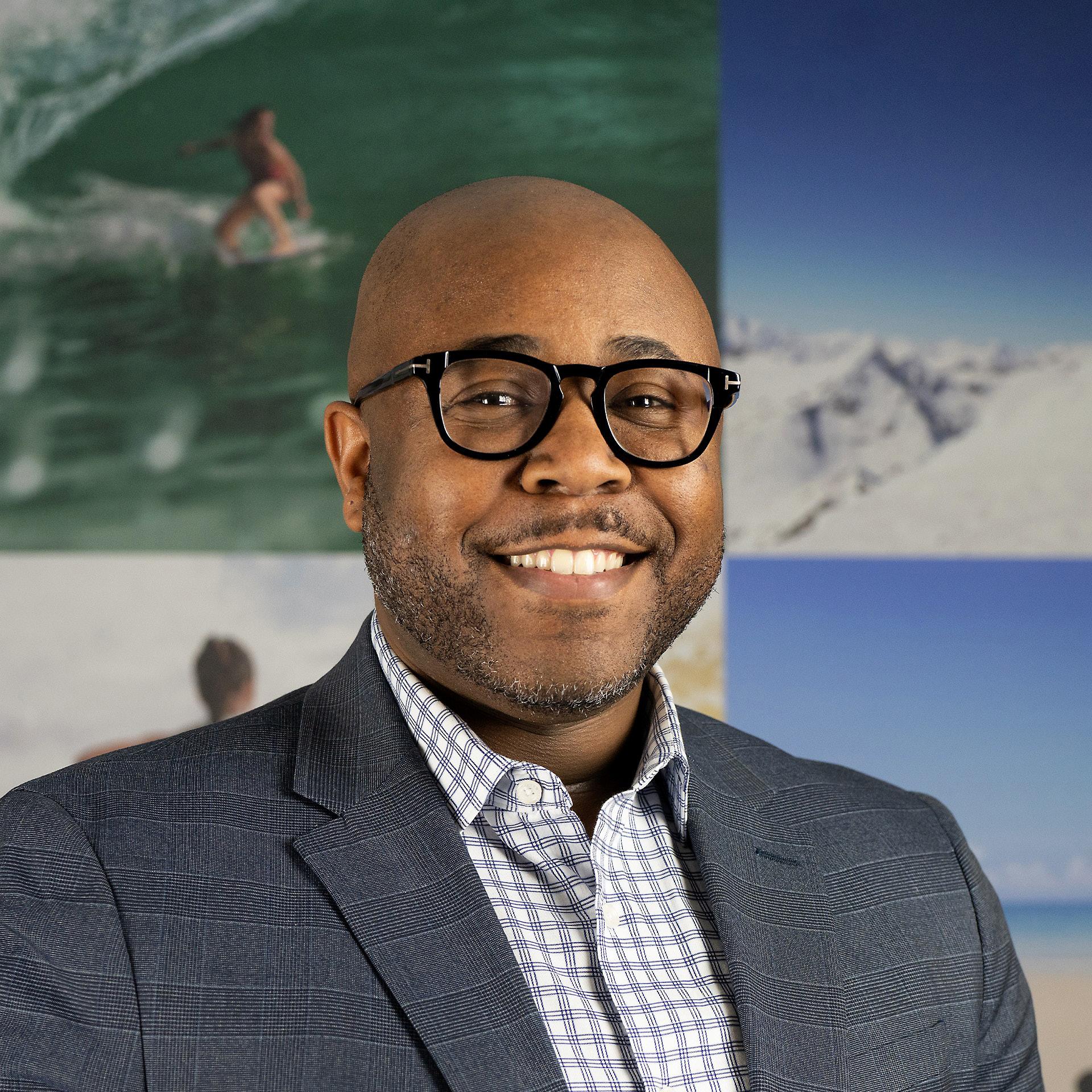 Marcus Sandifer VP of Business & Legal Affairs, General Counsel, and Corporate Secretary Celsius Holdings
Marcus Sandifer VP of Business & Legal Affairs, General Counsel, and Corporate Secretary Celsius Holdings
32 AHL
Wesley Ross
is a working CEO who will go to lunch and get to know employees on every level and will be there loading product into the back of vans if he needs to.”
The general counsel has identified numerous ways to employ that same people-first mentality. Inspired by the experience he had as an intern with PepsiCo, Sandifer instituted a similar program for college students at Celsius. And on a community level, the company partners with first responders in the local Palm Beach, Broward, and Miami-Dade
Counties. Celsius donates product and financial support to events that support the police and fire department such as runs, walks, and marathons. It will also be holding its own paddleboarding event to support charities for Cystic Fibrosis.
Community outreach strikes a chord with Sandifer, who at the tender age of ten wrestled Hulk Hogan for charity. As an adult, he’s dedicated to reducing the stigma around mental health, particularly in communities of color, and with his family has organized various events to boost men’s health awareness. These events feature inspirational speakers and provide men’s health screenings and fun activities for all ages.
“My father and brother are survivors of prostate cancer, and his brothers are currently fighting again,” Sandifer shares. “I’ve seen how prostate cancer has impacted my family and just a lot of men like myself, who are young and may not take our health seriously until it’s too late.”
Between his expert leadership and commitment to giving back, it’s no wonder Sandifer is described as half-lawyer, half-superhero, and fulltime law nerd. AHL
The Feature 33
“I’ve known food beverageandmy whole life.”
WORK BETTER

34 AHL
MAKE WORK BETTER
Andrea Herron’s aims to optimize working conditions for employees at WebMD Health Services—and, through her book and podcast, for people across industries around the globe
By Andrew Tamarkin
The Feature 35
Andrea Herron is determined to make work better for people. In addition to her day job as head of people for WebMD Health Services, she’s a published author of There’s an Elephant in Your Office and host of The HR Scoop podcast. Her career experience, background in psychology, and passion for people have given her a unique perspective on change management, human connection, adapting and rethinking space, and mental health in both physical and virtual workplaces.
A Kentucky native, Herron earned a bachelor’s degree in psychology and a master’s in industrial organizational psychology from Western Kentucky University. “I’ve always been curious why people do what they do,” she says.
After earning her master’s, Herron dove right into HR at Berry Plastics, a global plastic manufacturer in southern Indiana. But she was eager to plant roots somewhere better suited to her family’s lifestyle and relocated to Portland, Oregon. “I left my job, loaded a U-Haul, [took my] six-month-old baby, and off we went to a town we’d never been to,” Herron remembers.
She joined the HR team at ClearResult, an energy conservation business, and later became vice president of HR at the Oregon Humane Society. When she was recruited to join WebMD Health Services as its head of people, it was the natural step forward. “HR—similar to nursing or teaching—deals with people,” Herron says. “Sure, there are industry differences, but it’s still a group of people trying to accomplish something.”
Since she joined WebMD Health Services nearly five years ago, Herron has utilized her experience across industries to drive meaningful change. The scope of her influence currently includes top-to-bottom organizational development, leadership mentoring, and business strategy budgeting for more than three thousand employees in several business lines worldwide.
“I wear so many hats I could open a store,” Herron says. “The more I impact real people and make the workplace better for the humans that come in every day, the more I want to keep doing it.”
75% of millennials expect employers to provide financial, emotional, and social wellness resources (Welltok, 2019)
For Herron, accounting for human nature makes change management more proactive, especially amid what’s being called the Great Resignation. “In the past two years, people have had the time to consider where they want to spend their time, energy, and resources. That’s why we’re seeing so much turnover in every industry,” she explains.
People innately resist change, instinctively want to know how that change is going to affect them, and typically need time to adjust to new workflows. So when dealing with change, Herron doesn’t make unilateral decisions: she seeks diverse perspectives representative of
36 AHL
the employee networks that will be experiencing the change.
“If you bring a sense of curiosity and an open mind to a situation and consider as many perspectives as possible, you’re going to save so much chaos,” Herron says.
Interpersonal connections can make change easier; conversely, Herron notes, when people lose those connections their productivity and creativity go down. “There’s no context, tone, or body language in an email; it’s all a projection of how we’re thinking, the mood we’re in, and what happened five minutes before,” she remarks about the remote working model. “Creating any opportunity for people to casually connect is worth every dollar spent in retention and engagement.”
In WebMD Health Service’s virtual office space, staff members participate in chat channels devoted to topics like sports, animals, parenting, or crafts. Wednesday coffee chats are on the calendar once a month for anyone wanting to disconnect from work and connect with each other. Every other Friday, Herron’s team hosts a casual all-staff meeting called TGIF, where the leadership team shares real-time updates, celebrates wins, and highlights volunteer opportunities.
“Equally important as rethinking your virtual space is adapting your physical space,” Herron says. “We spend so much time in a workspace. Do we really consider how we’re using it? Do you want to have spaces that make people feel excluded? Do people of color, women, and parents all feel comfortable and included in your office?”
For Herron, making the workplace more inclusive means more sunlight and greenery to psychologically put
The Feature 37
“Work is not working for a lot of people. The more you can be your quirky self and admit your mistakes, the more it gives permission for other people to do the same.”
Empower Well-Being In Your Workforce



A thoughtfully designed well-being program can help employees feel healthier and happier–at work, at home and everywhere in between.
Learn more at webmdhealthservices.com
Andrea Herron Head of People WebMD Health Services
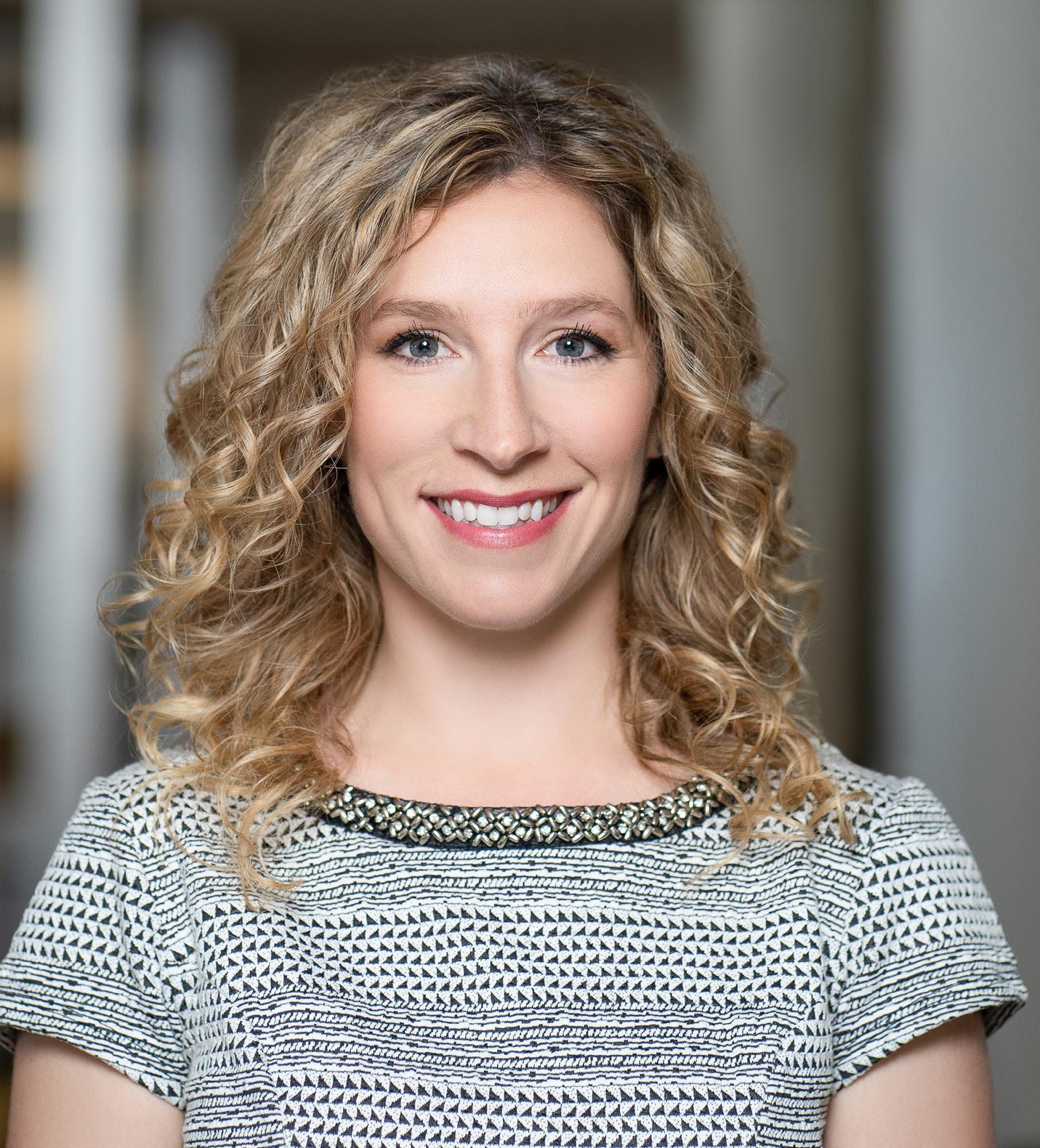
people at ease, an office set-up that accommodates open collaborative workstations as well as quiet focused spaces, and representative faces on company sites and in office pictures.

The pandemic has made the conversation around mental health more visible, and Herron is armed with a psychology background and the professional resources to address these issues head-on in every workplace. She has found that mental health shows up differently in person versus virtually, an idea that’s discussed at length in the second edition of her book, There’s an
Elephant in Your Office. “[The book is] a tactical guide to helping people, and the managers of those people, who may be struggling with mental health on the job,” Herron says.
Additionally, in her podcast The HR Scoop, Herron talks to other HR professionals about how to address these issues in any industry of any size. “Work is not working for a lot of people,” Herron says. “The more you can be your quirky self and admit your mistakes, the more it gives permission for other people to do the same. If we can realize we’re all doing our best, it becomes so much easier.” AHL

Slevin Hurtado 38 AHL
The Path
Every step executives take on their career journeys is pivotal to achieving their current successes. Along the way, individuals accumulate technical skills, foster relationships, and develop the leadership acumen that have turned them into pioneers of the industry.
50.
62.
40. Lauren Poe JPS Health Network
44. Amy Beales Children’s National Hospital
Suja Subramaniam Roche Diagnostics
54. Jack Kennedy Jr. Carnegie Mellon University
39
Michelle Whitely Texas Christian University
Turning a Closed Door into a Dream Job
Lauren Poe always knew she wanted to work in healthcare, but when her initial plan fell through, she had to find another path. Along the way, she discovered her passion for healthcare administration.
By Claire Redden
auren Poe knew she wanted to work in healthcare from a very young age. “It was my passion; the thought of helping others and making a difference in peoples’ lives ignited me,” she says. Ultimately, Poe went to college to pursue dentistry, but upon application to dental school, she didn’t get in.
With the intention of applying again, Poe started her master of healthcare administration: simultaneously, she worked full-time in the med staff office at a local hospital. “I fell in love with every
aspect of healthcare administration and its role in delivering care to patients,” she says. From there, she knew where her heart lay.
Poe changed her mind about dental school and chose instead to follow her passion. “I’m a firm believer that everything happens for a reason. It took me ten years to realize why I was told no to dental school, but ten years later, I’m so very thankful for that closed door,” she says. After completing her master’s degree, Poe went to work at a Catholic nonprofit
healthcare system, where she served in several different capacities. “I was very blessed and had a lot of great mentors in that system. Every time a growth opportunity became available, they were like, ‘Hey, you want to try this? I think you could get some more experience,’” Poe says. She became very passionate about the organization’s mission. When her husband assumed a new position and she began her job search in a new city, Poe remained adamant about finding a cultural fit. She knew she had found her
L
40 AHL

Brian Maschino/JPS Health Network The Path 41
Lauren Poe Chief of Staff and Chief Strategy Officer JPS Health Network
42 AHL
“Understanding our communities helps us create an outcome-based outreach strategy that reduces community-level health disparities and improves outcomes for disadvantaged populations.”
match when she came across a position at JPS Health Network—even if it meant commuting eighty miles each way.
“People always ask me why, and my answer is always the same: I love the work that we do here at JPS and who we do it for. At the end of every day, I know when I go home that what we do impacts the most vulnerable patients in our society,” Poe says.
As a county hospital, JPS serves anyone and everyone. As the chief of staff and chief strategy officer, Poe worked with other leaders at JPS to build a strategic imperative around individualized care models that ensure every patient achieves the best health outcomes.
For Poe, this all comes down to understanding the community and its needs. This means not only taking into account aspects such as health status, access to care, behavioral health, and various social determinants, but also considering cultural, religious, and generational differences.
“Ultimately, it’s not a one-size-fits-all approach. Understanding our communities helps us create an outcome-based outreach strategy that reduces communitylevel health disparities and improves outcomes for disadvantaged populations,” she explains.
However, if you ask Poe to name the most challenging aspect of her role at JPS, it’s not her effort to build systems that help correct healthcare inequality. Instead, it’s her work creating an entirely new strategy infrastructure and Office of Strategy Management.
Not only did she introduce something new to a decades-old organization, but she did so at a time when caring for patients through the surges of the pandemic took top priority. “The number one word that I’ve used over the last year and a half has been ‘grace,’” she says. “Giving us grace as we work out the kinks of a new process
and giving grace to the front lines, who had many other important things going on.”
When assigned this task, Poe took it to heart, particularly when the CEO relayed they didn’t want a document that would “sit on the shelf and collect dust.”

To make it sustainable, Poe developed an idea around strategy management. The team doesn’t just lead strategic planning efforts, but also guides implementation and organizational alignment, while continuously evaluating progress. “That building of the Office of Strategy Management and focusing on not just the planning efforts but truly the implementation and sustainability of it all for the organization is what I’m most proud about,” she says.
As a leader, Poe believes in building a team of people that surpass her, affording her the balance between setting expectations and giving individuals the freedom to grow into their own roles.
“I’m very much an outcomes-driven individual, so that’s the expectation that I set, but I allow them the opportunity to determine how we get there—that’s where they can prosper,” she says.
Poe’s advice to others is simple: “You cannot have success in anything in life without putting the work in, and if and when success does come, remember to stay humble. Each of us will always have opportunities for improvement.” AHL
Citrin Cooperman’s Heal thcare Prac tice
At Citrin Cooperman, our dedicated healthcare team supports efforts throughout the full continuum of care — servicing providers, payors, and investors. We offer a suite of services specifically designed to add value, helping organizations position themselves for short-term profitability, long-term sustainability, and strategic growth.
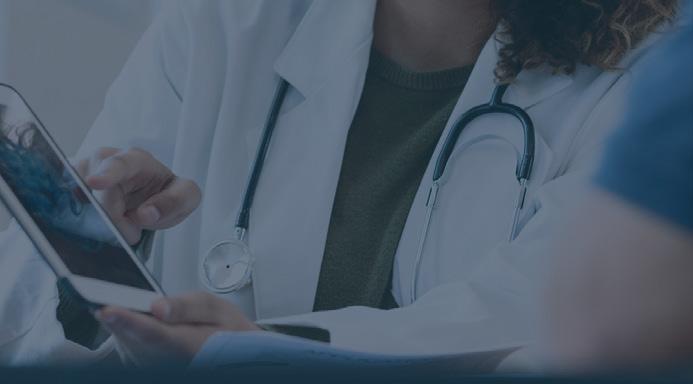

Healthcare organizations continue to adapt to challenges associated with new payment models, rapid consolidation, new market entrants, changing technologies, enhanced patient expectations, and more. Citrin Cooperman’s Healthcare Practice helps organizations navigate the current environment with a suite of services designed to ensure organizations position themselves for short-term profitability and long-term sustainability.
M&A AND STRATEGIC PARTNERSHIPS
STRATEGY FINANCE AND OPERATIONS
BUSINESS PLANNING AND FINANCIAL FEASIBILITY
To learn more, contact Heather Spillman at hspillman@citrincooperman.com
“Citrin Cooperman” is the brand under which Citrin Cooperman & Company, LLP, a licensed independent CPA firm, and Citrin Cooperman Advisors LLC serve clients’ business needs. The two firms operate as separate legal entities in an alternative practice structure. Citrin Cooperman is an independent member of Moore North America, which is itself a regional member of Moore Global Network Limited (MGNL).

The Path 43
Breaking the Mold
Amy Beales uses nontraditional methods and best practices from other industries to find, recruit, and retain the best talent at Children’s National Hospital
By Zach Baliva
44 AHL
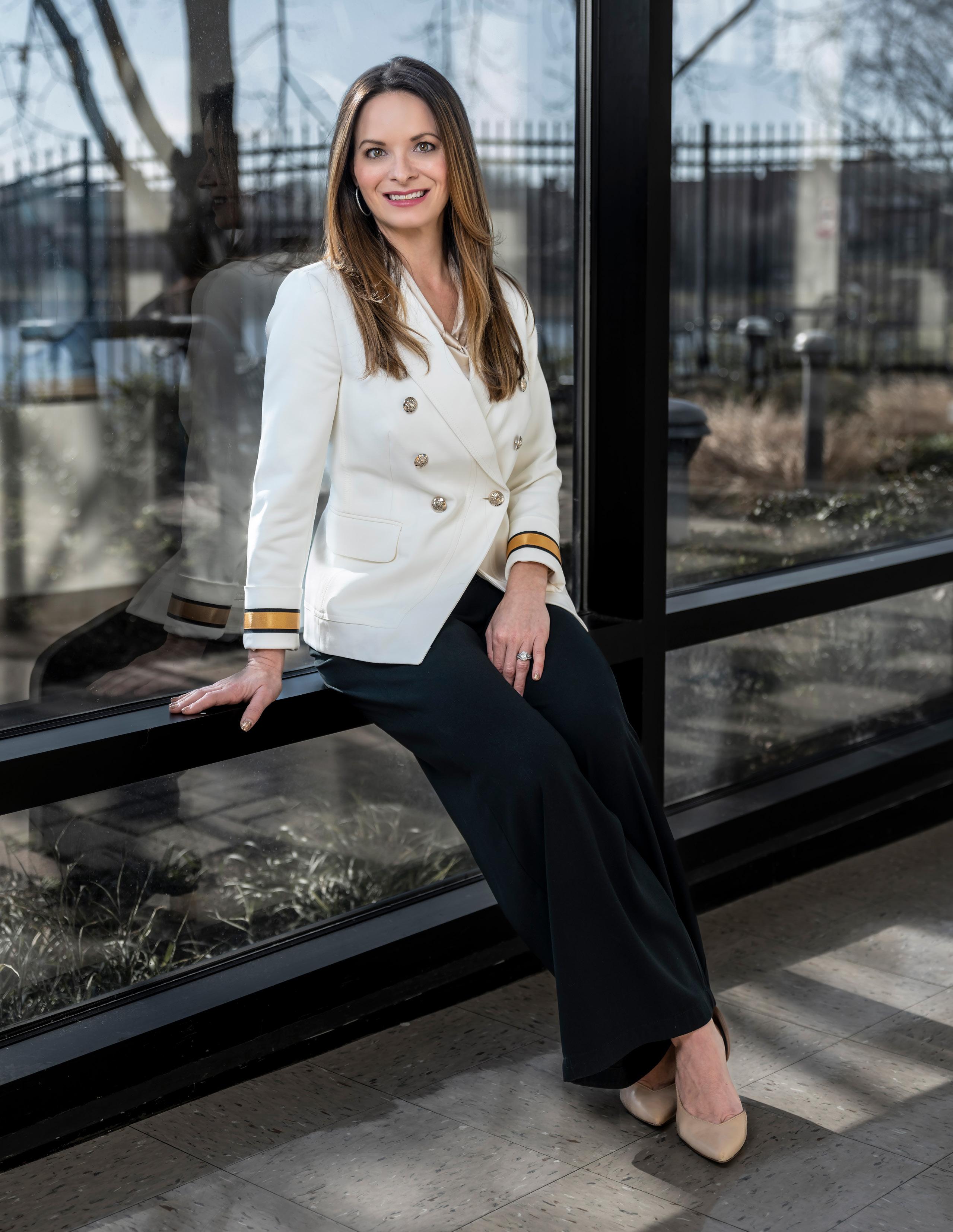 Amy Beales
VP of HR Talent Management
Amy Beales
VP of HR Talent Management
Kenson Noel/Children’s
The Path 45
Children’s National Hospital
National Hospital
Amy Beales has been in talent acquisition and management for more than fifteen years, and although she’s climbed the standard HR ladder, her work is anything but routine. She’s served in both financial services and healthcare, and a recent promotion at Children’s National Hospital affords her space to showcase her skills outside of recruitment. As she steps into the role of vice president of HR talent management, Beales is on a mission to break the mold around the typical healthcare hiring process.
Although the area is known for monuments, attractions, and buildings like the Library of Congress, the Lincoln Memorial, and the White House, Washington, DC, is home to another important institution— Children’s National Hospital. Its original facility was founded in 1870; today, the top-ranking system provides general pediatric and specialized care across Maryland, Virginia, and DC. The network links thousands of employees who serve individuals and patients in its communities.
Children’s National possesses a strong reputation in the industry, but when Beales joined as director of talent acquisition in 2017, she found a recruitment function needing repair. Internally, the department didn’t receive recognition as a strategic partner to help with sourcing and finding top talent.
“It’s important for every HR team to be seen as a true internal partner,” she says. “And I knew we had the foundation to build that trust and get to a better place by implementing some strategies I had seen work well earlier in my career.”
Beales uses her nontraditional background as an asset in healthcare. After completing undergraduate and master’s degree programs at Towson University, she spent the first half of her career in financial services as a
talent acquisition director at MetLife. The fast-paced era taught her about branding and showed her the importance of creating the right candidate experience. “We want every candidate to walk away thinking Children’s National would be a great place to work,” she explains. Beales introduced branding, clarity, and efficiency into the process to improve the candidate experience.
She’s also imported best practices from her nearly five years at the University of Maryland Medical System. During her tenure there, the organization transitioned to a shared service model. As the talent acquisition team expanded from supporting one hospital to ten, she built a cadre of dedicated sources to handle outbound headhunting. Then, she compiled robust data sets to help leaders understand how to best leverage the strengths of a shared service model in healthcare.
These lessons and experiences help Beales find success at Children’s National. Her first move involved rebranding talent acquisition to leaders, managers, and administrators. While many viewed talent acquisition only as a necessary resource to post jobs and screen candidates, Beales knew the potential of the function. “Recruiters should be a true strategic partner to its organization,” she reiterates.
Beales reshuffled teams and issued the onboarding tasks to a dedicated group of coordinators, who work with candidates from start to finish. That empowered recruiters to focus on sourcing and selecting. Next, she used the data model from the University of Maryland to capture information on time-to-fill and other metrics, before creating dashboards, analyzing trends, and uncovering opportunities for improvements.
After putting these foundational pieces in place, Beales earned a promotion to VP of HR talent management in July 2021 and continued to develop her program.
46 AHL
The Path 47
“It’s important for every HR team to be seen as a true internal partner. And I knew we had the foundation to build that trust and get to a better place by implementing some strategies I had seen work well earlier in my career.”
“The competition for talent in healthcare is fierce, and I wanted to push us to do new things,” she says. “If we don’t start looking for talent where others aren’t, we will miss an opportunity to differentiate.” Broadening its sourcing strategies, the hospital collaborates with community partners to recruit high school students and Afghan refugees.
With tackling nationwide healthcare worker shortages proving one of today’s biggest challenges, Beales believes mission and values to be more important than ever before.
“Candidates care about jobs and benefits, but what pushes it over the finish line is culture,” she says. Her team completed an engagement survey that returned some surprising results. In response to an open-ended question to identify how employees like to be recognized, responders overwhelmingly indicated that the top five ways they prefer to receive recognition had nothing to do with benefits or bonuses—they want one-on-one conversations, feedback, and public recognition.
Beales’s successful track record makes such an impression that it even garners recognition and accolades from colleagues outside the hospital. “Amy’s commitment to building an organization that celebrates, strengthens, and engages each individual through their unique strengths and talents sets up every colleague and team for continued success and growth opportunities
within Children’s National,” says Mitch Bergen, client strategist for HR consulting firm Talent Plus.
In spring 2022, Beales refreshed the system’s core values and used this to reenergize employee recognition efforts. She also completed a performance management redesign and reshaped a new interview process. Teams increasingly focus on behavior and potential rather than experience. Because Beales uses data, she knows which behaviors will lead to long-term success at Children’s National.
These strategies also are aimed at those already working at the hospital. Beales, who coordinates learning and development efforts and leads succession planning, uses a tool to help leaders identify their strengths. This allows them opportunities to develop new skills and lead other functions potentially. In her system, the hope is that one day, one executive could replace another departing. “People crave development, and leaders need to see potential to stay with an organization for a long time,” she says.
In 2021, Beales and her team filled about 1,700 positions. This year, they expect to hit the same volume. As some clinicians leave the bedside in search of better pay or a new environment, Children’s National trusts the impact it makes to aid in recruitment. “We’re a special place filled with amazing people who provide lifesaving care to the nation’s children,” Beales says. “Anyone who cares about that mission can find a home here.” AHL
48 AHL
“If we don’t start looking for talent where others aren’t, we will miss an opportunity to differentiate.”
Select the best.
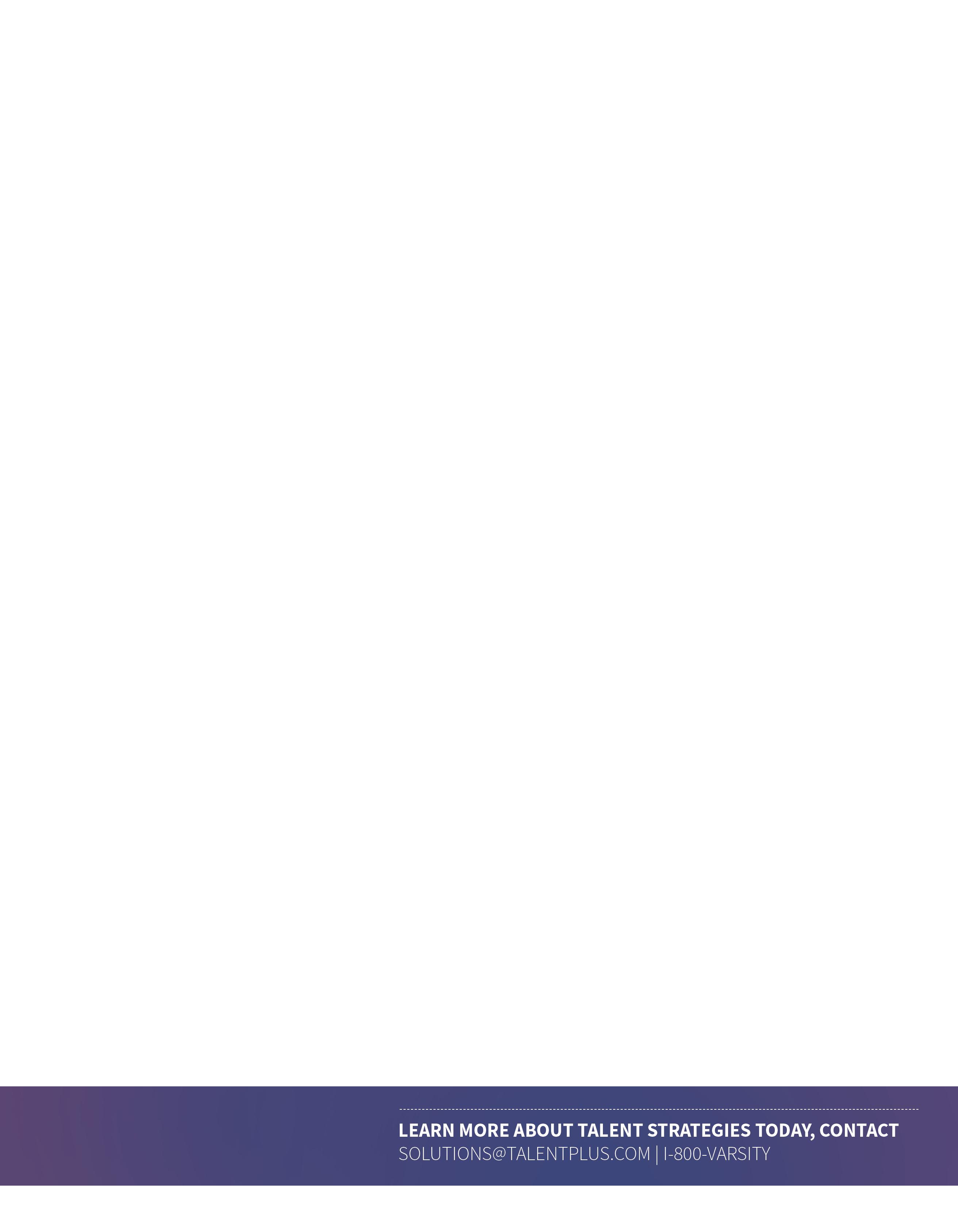
The Power of the Patent
At Roche Diagnostics, Suja Subramaniam is working to build, protect, and enforce the company’s patent portfolios
By Zach Baliva
Suja Subramaniam has a key and prominent role at the world’s largest biotech company. The head of intellectual property (IP) joined Roche Diagnostics nearly two decades ago, providing the competitive intelligence, cross-functional leadership, and strategic legal counseling that protect the business as it develops tools and products that improve the way scientists and physicians diagnose, prevent, and treat disease.
The journey to the top of a leading pharmaceutical and biotech company with nearly $60 billion in annual revenue was a long one. Born in India
and raised in a middle-class New Delhi family, Subramaniam recalls, “There wasn’t too much change or adventure in my life as a teenager.”
Subramaniam first pursued an undergraduate degree in chemistry. Her parents wanted her to become a physician, but a computer science course put her on a new and unexpected path. One of three girls in a class of twenty-five students learning to program, she finally found the excitement she craved.
Subramaniam looked for a way to combine her interests in chemistry and computing. A love for science and a desire
50 AHL
to be in the lab motivated her, and she targeted a PhD program that would prepare her for a position in research and development at a leading institution. But all of that changed when Subramaniam received news—an unexpected personal situation that directed her to choose a different career path away from the laboratory.
As the young student evaluated her options, law school emerged as a match for her skills. “Legal matters are like science experiments, where the variables are case law and precedents,” she says. Subramaniam received a full fellowship to Notre Dame in South Bend, Indiana, and experienced snow and American culture for the first time.
Upon graduation, Subramaniam earned a master’s degree in intellectual property, and later worked for a law firm in Michigan, where she learned how to draft patent applications and “convert technology into something people can use.” After nearly four years, Subramaniam had become a skilled patent attorney—but she missed chemistry and the excitement of innovation. She started looking for an in-house opportunity that would allow her to interact with scientists.
Subramaniam found that opportunity in 2003 and joined Roche as a patent attorney. She later led a patent department in Switzerland and headed Roche Diagnostics’ legal department in India. She stepped into to her current leadership role in 2021.
As a former scientist, Subramaniam feels an extra responsibility to do her job well, because Roche produces tests and instruments that diagnose everything from cardiac failure to HIV. “We are innovating in healthcare, and patents are one of the ways we show that innovation to the world,” she says. “Our scientists are working hard behind the scenes on
“I’ve learned to speak up as a woman and an ethnic minority because if I don’t, there is nobody else to offer my perspective.”
The Path 51

Mahesh Subramaniam 52 AHL
Suja Subramaniam Head of Intellectual Property Roche Diagnostics
cutting-edge technologies, and when my team files patents for their innovation, we introduce them to the public.”
In the past ten years, Roche Diagnostics has made significant investments, including a series of acquisitions in cutting-edge technologies, such as personalized cancer diagnosis, gene sequencing, and data insights.
Subramaniam’s teams helped build and protect patent portfolios, including for these acquisitions. The deals have resulted in tangible benefits to patients, including her own mother, who was diagnosed with breast cancer.
In 2019, Roche introduced the first novel test to identify triple negative breast cancer patients for immunotherapy. Using these and other Roche tests that empower precise diagnosis, oncologists can determine which patients will benefit from specific treatments and therapies that reduce mortality rates dramatically.
At Roche, a deep commitment to research brings positive outcomes that improve and save patients’ lives. In 2021, the company launched four new diagnostic tools for diabetes care, introduced six new tests for infectious and cardiovascular diseases, and created twenty-two new assays in oncology.
Subramaniam works to create valuable assets for Roche as the company adjusts to changes in consumer behavior and healthcare. She compares investing in innovation and IP to planting fruit trees: in both cases, the benefits are reaped by future generations. “As an IP attorney, we need to help the business see this long-term benefit,” she says.
COVID-19 changed everything and opened up new opportunities. In 2020,
Roche started manufacturing and selling at-home testing kits, and now has twentytwo tests and solutions in its COVID portfolio. In fact, the company’s innovations enable more than sixty million coronavirus tests per month.
Ten years ago, Roche’s work went straight from its big labs to hospitals. Now, Subramaniam aims to partner with the company to expand home kits for testing other illnesses and diseases.
“COVID-19 is changing healthcare, and we are going to see more tools for sample collection and other diagnostic tests shipped directly to patients. Business and revenue streams are shifting, and IP can partner with business to drive the change,” she explains.
In addition to managing IP teams, Subramaniam helps lead the Roche Women in Leadership group and advocate for diversity. “I’ve learned to speak up as a woman and ethnic minority, because if I don’t, there is nobody else to offer my perspective,” she says, adding that the outlook for women in the industry and world is improving.
She’s inspired by her own daughters’ ability to confront bias, and likes to think that she has inspired the next generation to consider nontraditional leadership roles that impact the world and bring positive outcomes to healthcare. AHL
Excellence. Dedication to Clients.
WilmerHale : “Suja is an incredibly talented lawyer, who is able to align her department’s work with the company’s core strategic priorities, all while navigating complex legal issues. We greatly value our work together.”
–Bob Gunther, Partner

wilmerhale.com
Clients rely on the valuable insights of WilmerHale’s lawyers who have years of experience navigating the nuances of intellectual property litigation across the globe.
Legal
Attorney Advertising The Path 53
© 2022 Wilmer Cutler Pickering Hale and Dorr llp
A Life
Committed to Benefits
Jack Kennedy Jr. has been working in human resources for nearly three decades, and he’s putting that expertise to good use at Carnegie Mellon University
By Donald Liebenson
54 AHL
 Jack Kennedy Jr.
Assistant VP of Benefits & Compensation Carnegie Mellon University
Jack Kennedy Jr.
Assistant VP of Benefits & Compensation Carnegie Mellon University
The Path 55
Sally Maxson
“W e touch people’s lives at their happiest, and sometimes their saddest, times: marriage and parenthood, but also illness, death, and divorce. The role that benefits and compensation has is huge,” says Jack Kennedy Jr. And he should know: “I’ve been doing this for thirty-plus years. It is, to me, a great source of job and personal satisfaction.”
Kennedy is assistant vice president of benefits and compensation at Carnegie Mellon University in Pittsburgh. From technology to cultural shifts, he has seen epochal changes in how HR is administered over the last three decades.
Take the fax machine. A veteran of the auto industry, Kennedy recalls, “When I was at General Motors, I’d have people show up in my office and say, ‘I want to retire right now.’ We would order a packet from Detroit. It would get mailed to me. That would be a week. You’d have to fill it out and send it back; it took weeks to get somebody retired. When they invented the fax machine, the packet would be on my desk in an hour. I could retire someone in a day.”
Another positive change, he says, is medical protocols. “When I started, only an abbreviated version of a colonoscopy would be covered, and a full procedure would be done only if they found
something,” he says. “When that protocol changed, we saw dramatic increases in people who survived cancer.”
Kennedy lived in Buffalo, New York, for most of his life before moving to Pittsburgh in 2018. There, his father served as a union leader in the auto industry.
“He was a shop committee man before serving as president of United Auto Workers Local, representing the Chevrolet-Buffalo plant for seventeen years,” Kennedy says. “I remember it as a very close-knit environment. When someone needed something, everyone came together and supported each other. As I moved into human resources, that background formed the foundation for the way I thought people should be supported in their employment life.”
Kennedy began his career in benefits in 1986 as a social welfare examiner for Erie County, before moving to a benefits position at American Axle & Manufacturing, his father’s former plant.
The auto industry went from boom to bust during the 2008 financial crisis, and Kennedy knew if he wanted to stay in Buffalo, he would have to make himself more marketable and consider other industries. He got his MBA and then spent four years with Moog Inc. In 2011, he joined the Seneca Gaming
56 AHL
The Path 57
“As I moved into human resources, [my father’s union] background formed the foundation for the way I thought people should be supported in their employment life.”
Corporation as executive director of compensation and benefits, and later earned a role as vice president of HR.
Kennedy would finally leave his hometown of Buffalo after his position as director of compensation and benefits with Fidelis Care became redundant following a company acquisition.
“At this point, my options were somewhat limited,” he says. “As you move up the career ladder, opportunities and positions are harder to find.” He had a daughter and other family living in Pittsburgh, which drew him to the city.
When offered the chance to join Carnegie Mellon University, he believed it an opportunity he couldn’t turn down.
The then-leader of the benefits and compensation department had plans to retire, which allowed Kennedy time to transition smoothly into the position.
“I had never worked in higher ed,” Kennedy says, “so the lead time gave me the opportunity to learn the organization. Every industry has its own ways of working. In higher ed, you need to socialize. There are many groups and departments throughout the university; everyone needs to have their voice heard when it comes to benefit and compensation changes, and be given the opportunity to provide their feedback. This collaboration is a very important aspect of the functioning of the university.”
Kennedy himself plans to retire in the next five years or so, but for the moment he’s fully immersed in his career and moving forward with new initiatives. He’s particularly proud of one: a benefit assessment project aiming to create an accessible and streamlined program to help employees select the benefits program best suited for them.
“We offer a lot of [program] choices,” he says, “and because of that, people might be overwhelmed. We’ve already streamlined our vendors and plan designs to make these plans more easily understood by our participants.”
Another new initiative is a retirement readiness program. While many programs focus on the basics, such as benefits and Social Security, Kennedy feels it’s also important to cover areas retirees may not have anticipated. For example, is it finally time to sell the three-story colonial house and downsize to a ranch?
58 AHL
“We touch people’s lives at their happiest, and sometimes their saddest, times.”
The Value of Your Workforce Going to THE DENTIST
When employees take action for their oral health and use their benefits for preventive dental care, companies get more from their dental insurance investment. Taking care of your mouth is a critical part of whole-body health, so it’s important to encourage your employees to visit the dentist regularly. Preventive treatment helps them stay ahead of issues, like gum disease, before they become expensive and difficult to treat. Or—even better--it helps avoid them altogether.
More than “just a cleaning”
Adults in the U.S. miss 92.4 million hours of work or school each year because of unplanned emergency dental care.1 Routine dental exams can help identify and address problems before they require costly treatment or time out of work.
Preventive care starts with the dentist – they do so much more than just clean teeth. Members who received preventive dental care twice yearly had lower total medical costs than those who saw the dentist less frequently (once in 3 years or not at all).2 This may also indicate improved overall health outcomes and better quality of life.
The United Concordia Dental Advantage
Dental plans to fit the unique needs of every business, with best-in-class expertise and industry-leading discounts:




50+ years of experience
•9.2 million members supported
•Tailored dental solutions

Large national network
•124,000+ in-network dentists








•95% of members have a dentist within 10 miles of home or work
Dedicated to oral wellness
•Access to Oral Wellness Consultants






•Preventive services covered at 100%*
Easy benefits administration
•Online tools for easy task completion

•Group Administration Platform to manage plans online


Making it work at the workplace
We help employers realize the full potential of preventive dental care and strategize to:

OFFER the right dental plan
EDUCATE on the value of oral health and how to achieve it
ENGAGE staff through events and communications
X-Rays Medical and dental history review Treatment plan recommendations Oral cancer screening TMJ (jaw) and bite analysis Review of past dental work Check for cavities and other problems Gum disease evaluation
W E B - 0045-0122 • Important Di sclosures: U nitedConcordia.com/Disclaimers 1. Kelekar U, Naavaal S. Hours Lost to Planned and Unplanned Dental Visits Among US Adults. Prev Chronic Dis 2018;15:170225. 2. Value of Going to the Dentist. United Concordia Dental internal research. September 2017. *All traditional United Concordia Dental plans WEB-0045-0122 • Important Disclosures: UnitedConcordia.com/Disclaimers
Navigating life together
Among Kennedy’s current priorities are diversity, equality, and inclusion (DEI) issues, which are high on the list. “It’s very important work,” he says. “We try to offer programs that provide everyone fair and equal treatment and remove the hurdles that people in diverse lifestyles have to overcome. For example, in same-sex marriages, we want to make sure that those couples are offered the same parental leave opportunities to bond with their children.”
Kennedy and his team also have assisted in creating programs to support campus families and address the issue of quality childcare—always a challenge for working families, and one exacerbated by the pandemic. Finding solutions involved collaboration between the office of human resources and many other departments in the university.
In March 2020, he says, they went fully remote, and employees’ children weren’t in school. “Working around those needs was very difficult,” he says, “but we had the strong support of university leadership. During the unprecedented challenges that faced the university during the pandemic, they were proactive and engaged in
these issues and empowered us to continue to develop and offer competitive benefits to support the well-being of the campus community.” One of the university’s responses included the creation of on-campus drop-in centers and a proctoring program, where older children could be supported during online classes.

Carnegie Mellon partnered with a service provider offering an online marketplace to connect caregivers with families in need of their services, which include childcare, senior care, special needs care, tutoring, pet care, and housekeeping. Since then, the university has expanded the program to include conciergelevel support, especially in infant care. The team continues to look at innovative ways to support families, such as potentially using mobile lactation units to assist breastfeeding parents.
In his current role since October 2020, Kennedy has adopted his predecessor’s game plan, grooming his successor for when he retires. “I want to make sure that when I leave, and my successor steps into my role, they will be prepared to lead the programs and support the goals of the university,” he says. AHL
Metropolitan Life Insurance Company New York, NY 10166.
States]
MetLife Services and Solutions, LLC
www.metlife.com
L0122018966[exp0124][All
[DC,GU,MP,PR,VI] ©2022
60 AHL
Aon is in the business of better decisions
Uncertainty has become the new constant in a world that is increasingly volatile. With this change comes a pressing need for businesses to make important decisions more often.

Aon is positioned to deliver innovative solutions and become the partner of choice for all businesses — no matter industry, size or geography — looking to make better and more informed decisions.


Learn more at aon.com.
aon.com
For UPMC Health Plan “best” information go to www.upmchealthplan.com/best.
Nondiscrimination statement
UPMC Health Plan1 complies with applicable federal civil rights laws and does not discriminate on the basis of race, color, national origin, age, disability, sex, sexual orientation, gender identity, or gender expression.
1UPMC Health Plan is the marketing name used to refer to the following companies, which are licensed to issue individual and group health insurance products or which provide third party administration services for group health plans: UPMC Health Network Inc., UPMC Health Options Inc., UPMC Health Coverage Inc., UPMC Health Plan Inc., UPMC Health Benefits Inc., UPMC for You Inc., and/or UPMC Benefit Management Services Inc.
Translation Services ATENCIÓN: si habla español, tiene a su disposición servicios gratuitos de asistencia lingüística.
Llame al 1-855-489-3494 (TTY: 1-800-361-2629).
The best doctors. The best hospitals. The best service. It’s how we help you live your best life.
注意:如果您使用繁體中文,您可以免費獲得語言援助服務。請致電 1-855-489-3494(TTY:1-800-361-2629)。
is good health? Your answer is as unique as you are. Whatever it means to you, UPMC Health Plan is here to help you live your life in the best way. We give you award-winning customer service, in-network access to the world-renowned doctors and hospitals of UPMC, and the people, products, and programs you need to live the healthiest life you can. We can’t think of a better outcome.
The Path 61
What
UPMCHealthPlan.com
Michelle Whiteley Does it for the People
Over the course of her two decades in benefits, Michelle Whiteley has learned what’s important to her: helping employees, including those she now works to support at Texas Christian University
“T he people.” That’s all Michelle Whiteley could say when asked what has kept her in benefits for the last twenty years. She began her career in the “people department” at Southwest Airlines; today, she’s the director of benefits at Texas Christian University.
“It’s all about the people and wanting to do something that is making a difference. Working in benefits has a lot of challenging aspects, but when you put all of the pieces together, what we’re doing is impacting people in a way that improves their lives,” Whiteley says.
By Claire Redden
When Whiteley made her way from Austin, Texas to Tarleton State University in Stephenville, she wasn’t sure what she wanted to study—or do, for that matter. “I wanted to be a vet, and then I realized how much science was involved with that, and I had to change,” she says. In the end, her dad advised her to get her bachelor’s degree in business administration.
“It’s not like going and getting a general business degree can give you an exact replication of what it’s like working in an HR department, but it was the only path
62 AHL

The Path 63
Michelle Whiteley Director of Benefits Texas Christian University Glen E. Ellman
I knew to go down,” Whitely explains. After graduating, she took her first job at Southwest Airlines in their HR department or, as they called it, the “people department.”
“It was about as entry-level as you can get—all I did was take fingerprints of incoming employees and take their pictures for their IDs. From there, I started building with every job I took,” she says. Six months later, Whiteley took a position in the retirement department.
“I oversaw 401(k) emergency withdrawals: [individuals withdrawing from their accounts] might be facing a foreclosure on their home, or they had huge medical bills due to something going on with their health, or they were paying their college loans.
I found out you can help people that are in tough situations,” she explains.
As Whiteley’s career grew, it took her to many public sector institutions, including school districts and city-, state-, and county-level organizations. “A piece of advice my dad always gave me was not to be mesmerized by the shiny start-up companies, to go with the tried and true,” she says. Once again, Dad’s advice paid off.
Whiteley’s experience eventually led her to higher education, and in 2015, she began her current role as the director of benefits at Texas Christian University (TCU), a private university in Fort Worth, Texas. Like many institutions, TCU was forced to make tough
“Working in benefits has a lot of challenging aspects, but when you put all of the pieces together, what we’re doing is impacting people in a way that improves their lives.”
64 AHL
budgetary decisions due to the COVID-19 pandemic. This brought unique challenges to the HR department, which had to comply with mandates from the board to cut certain benefits.
“Not only do I get to make decisions that benefit our employees, but along with that, I have a fiscal responsibility to my employer. It’s a real balance between providing the best benefits I can for our employees, while also staying on budget and finding new and innovative ways to offer benefits,” Whiteley says.
One particularly successful project in providing benefits, while also driving cost-savings, was the Voluntary Incentivize Retirement Program, which allowed eligible employees to retire early in exchange for a lump-sum benefit. “We had a lot of employees who took advantage of it. It’s always nice to wrap up a big project like that, look back, and be able to say it worked,” she says.
As employees struggled to shift their daily routines to work from home, it became increasingly important that HR offered benefits in a virtually accessible way. In addition to providing online dental, medical, and mental healthcare, Whiteley and her team changed their Employee Assistance Program provider at the beginning of 2022, based on feedback they received from employees during that time.
The past year also demonstrated a shift in the demographic within higher education. “We’ve started to see the demographics change throughout the pandemic, and [that’s] continuing now,” Whiteley says. “So, a benefit that we introduced was paid parental leave to help those employees having or adopting children.”
Whiteley constantly looks for ways to offer benefits that support specific groups and are helpful for everyone. For example, last year, her team introduced paid short-term disability insurance, which covers a portion of an employee’s salary if they cannot work due to a non-job-related injury or illness.
Today, Whiteley’s focus remains on developing a wellness program benefiting employees across the board. “It’s difficult because wellness is a moving target; what works today may or may not work tomorrow,” she says. “There are also many different aspects to wellness: it’s not just physical. I want to pursue initiatives that will
push employees toward wellness in all areas of their lives, including mental health and financial wellness.”
Despite the challenges and changes over the last couple of years, Whiteley says that the business of providing benefits hasn’t changed. “We’ve had to make some adjustments, and we’ve made some changes, but the bottom line is we’re still here to provide benefits to the employees and to support them.”
At TCU, Whiteley’s support of the employees fosters their service to the students. “The students are the end goal; that’s what you’re there for. I came to higher education knowing that what I’m doing affects the employees’ ability to go out into the world, whether at work or home with their families. We do a lot to support that,” she says, “from wellness to mental health to finance down to the day-to-day benefits we offer. Those are all things that we want our employees to take advantage of.
“What we’re here to do is to support the people,” Whiteley continues. “It’s a connection to employees.”
If it weren’t for the people, she doesn’t know what she’d be doing. “If I were a vet, I would be doing it for the animals, you know?” AHL
BCBS of Texas is proud to partner with and support TCU in fostering a health and wellness culture for employees and their families. We applaud Michelle Whiteley and the TCU team for their dedication and success in driving innovation in the benefits industry.
At Cigna, we offer real solutions for real life, delivering real value to you and your employees. Our whole-person health approach helps lower total healthcare costs and helps improves health outcomes by integrating the physical, emotional, financial, social, and environmental aspects of your employees’ health. Cigna. Your New Growth Plan.
SurgeryPlus delivers easy access to high-quality specialty care at fair prices for nearly 1,500 planned medical procedures that drive a majority of costs within a self-funded company’s medical plan. SurgeryPlus has the largest COE network of high-quality providers, with over 450 hospitals and surgery centers in the US.
The Path 65










Blue Cross and Blue Shield of Texas (BCBSTX) congratulates MICHELLE WHITELEY on her recognition in American Healthcare Leader. We proudly celebrate our partnership with Texas Christian University. www.bcbstx.com Blue Cross and Blue Shield of Texas, a Division of Health Care Service Corporation, a Mutual Legal Reserve Company, an Independent Licensee of the Blue Cross and Blue Shield Association 758104.0122 Congrats, Michelle! Your hard work and dedication are certainly an inspiration to all.
are proud of our strong collaborative relationship with you to improve health outcomes for members. 66 AHL
We
The Issues
National, and even global, forces have an unmistakable impact on an executive’s work. Whether it’s a legislative change or an industry-disrupting technological breakthrough, executives must constantly adapt their business strategies to keep their company thriving.
68. Sarah Nicholson athenahealth
72. Mark Adams Weill Cornell Medicine
78. Doug Leach Hospital for Special Surgery
67
Adding Value
Throughout her career, Sarah Nicholson has worked to create HR strategies that focus on listening to employees and making sure they feel valued
By Zach Baliva
68 AHL
Sarah Nicholson’s HR career has taken her from Canada to the US, and from the oil and gas industries to life science, biotechnology, and healthcare technology. Along the way, she’s built a niche for herself in the world of total rewards.
She spoke to American Healthcare Leader about mental health and wellness, diversity and inclusion, and how thoughtful improvements to employee compensation can help healthcare organizations thrive.
You’ve worked in a variety of regions and industries. What have been some of the important common threads throughout these experiences?
I’ve been fortunate enough to be part of great organizations that have given me a chance to add value across various facets of total rewards, each providing different experiences and perspectives.
The question has always been: how do you best attract and retain talent, while managing costs for the organization? The common thread has been about harnessing what’s most important to employees and ensuring that what you offer them aligns with their needs and allows them to be their best selves.
In particular, working in both biotech and healthcare technology (mission-driven communities that place health and well-being at the forefront) gave me further visibility into the importance of caring for all aspects of who an employee is. We need to care for employees financially, physically, and emotionally—this has become nonnegotiable.
Are these issues emerging more in today’s world?
I believe they are, yes. It impacts how organizations in healthcare and other industries attract and retain talent. At athenahealth, for example, our mission was to deliver high-quality healthcare for all. Taking a holistic approach helped us attract and retain the best talent to carry out that important mission.
What goes into putting that kind of talent philosophy in place, and what can other HR leaders learn from what you’ve accomplished?
At athena, we took steps to make sure we were investing in the benefits that actually hit the mark for employees. We surveyed them, and in doing so, we found out that we were missing a certain benefit plan type that a good portion of our employees wanted. This also allowed us to make adjustments to existing and underutilized plans, and introduce tools to help them select a match that works better for them.
There are lots of ways organizations think they’re doing great things, but sometimes you’re working with wrong assumptions. We had a big push to help employees pay off student loans, but our survey showed us that it was one of the last things they wanted us to do. Are you doing something because you think it’s important, or is it really important?
The Issues 69
“Employees already expect you to take care of them, because you’re a healthcare organization. We all know there is a talent shortage, and so you have to differentiate on more than salaries. Show you really value your employees.”
 Sarah Nicholson
Former VP of Total Rewards athenahealth
Sarah Nicholson
Former VP of Total Rewards athenahealth
70 AHL
Courtesy of Sarah Nicholson
What are some trends you’re seeing in healthcare and healthcare tech?
I think that more than ever before, there has to be a close values alignment between company offerings and employees. Employees already expect you to take care of them, because you’re a healthcare organization. We all know there is a talent shortage, and so you have to differentiate on more than salaries. Show you really value your employees. At a bare minimum, employees expect your value proposition to align with your external mission and brand. From there, it’s important to make sure you are transparent and your benefits are aligned with the employees’ interests.
deep-rooted issues. My teams have examined feedback coupled with benefit usage and plan selection by geolocation, therapy usage, time off, and pharmacy usage as ways to dig into what is going on. Time off is critical. Create a leadership environment where employees are empowered to use the benefits that are being offered to them, without judgement or penalty.
Mental health issues are making their way more into the forefront. What have your teams done in response?
Unfortunately, it’s still a little taboo surrounding discussions of mental health, and employees often have privacy concerns with these benefits being associated with their employer, but no company or organization is exempt from the effects of mental health, and we need to create safe spaces to discuss these issues.
At athena, it was about creating a space for dialogue. We did that with fireside chats, where we brought in trained mental health professionals to drive conversations and take anonymous questions. These were live virtual meetings, which we did not record, and we used them as vehicles to address real-time challenges our employees were facing and to remind employees about resource groups, assistance programs, and other resources. It needs to be an ongoing conversation, even if it’s uncomfortable.
What role do diversity, equity, and inclusion play?
That’s changed in recent years.
Right. It’s more drastic. Employees once came to work and got paid and left, but now there is a much closer integration between home and work life.
And how should employers respond?
Show employees you care.
Right. But how do you do that?
You have to take a step back and look at market trends and build a strategy, but you have to do that without forgetting your existing employee population. It takes listening. Make employees part of the solution. Look at data and metrics to see things that might reveal
It’s another area that requires more than a one-time conversation. We need to build inclusive organizations and offer inclusive benefits. I’ve expanded benefits packages to cover gender reassignment, provide same-sex spouses coverage, and offer adoption and surrogacy support.
Tell me about your goals going forward. What are you focused on today?
No matter where I am, I’ll be focused on doing the hard work that brings real results through people. We have to have hard conversations and do new things. Everyone wants the best and the brightest to be a part of their organization . . . but what are you willing to do to get that talent? AHL
Editor’s note: At the time of press, Sarah Nicholson had left athenahealth.
The Issues 71
“There are lots of ways organizations think they’re doing great things, but sometimes you’re working with wrong assumptions.”
Change Gears
Since making a career shift, Mark Adams has found a role at Weill Cornell Medicine that draws on both his medical and legal training
By Donald Liebenson
72 AHL
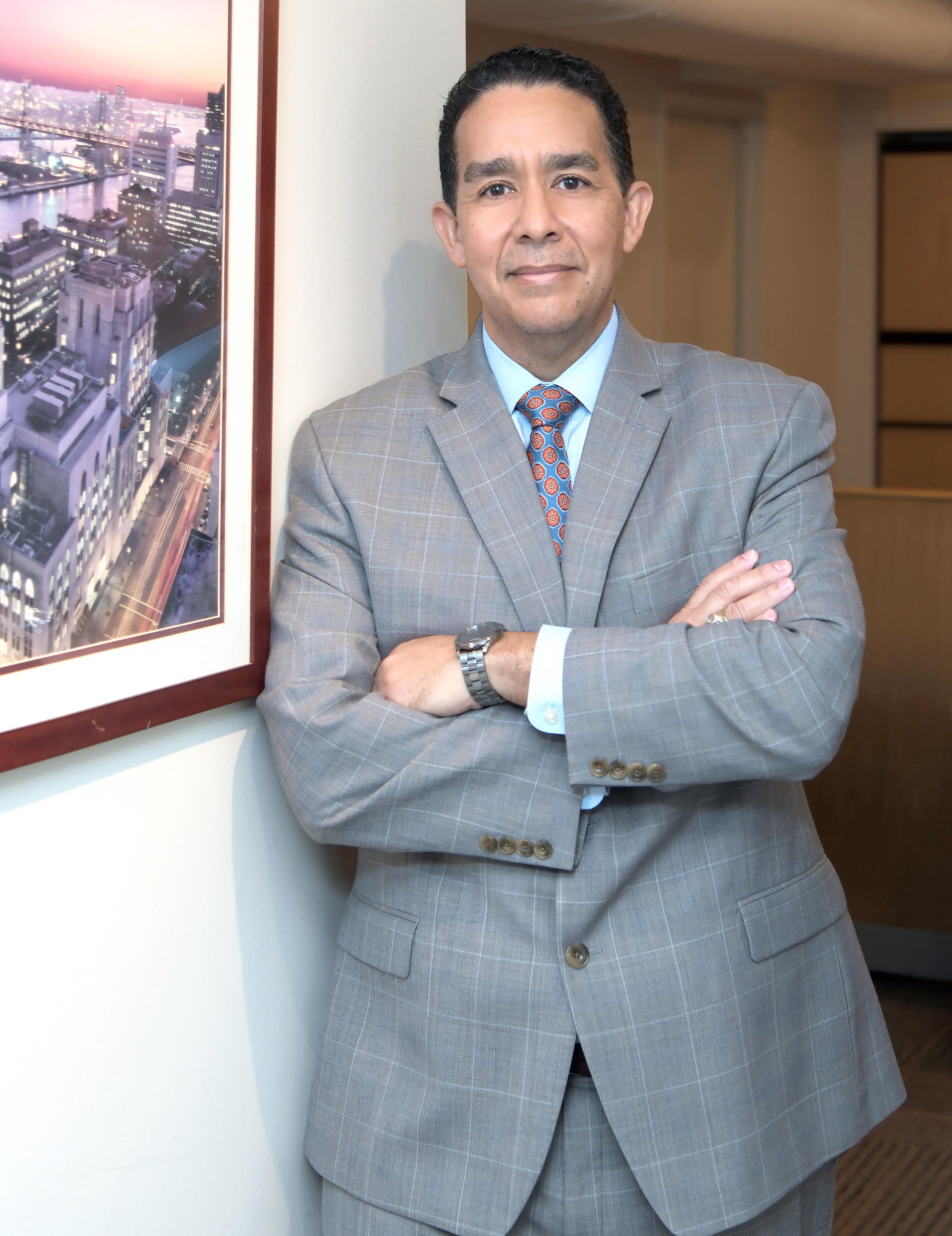 Mark Adams
Senior Associate General Counsel
Weill Cornell Medicine
Mark Adams
Senior Associate General Counsel
Weill Cornell Medicine
The Issues 73
Patricia Kuharic
When Mark Adams considers his journey from aspiring doctor to lawyer, he says it was all about “being willing and able to change gears and trust in my own knowledge of who I am and what I wanted to do.” There were other factors, of course. In addition to his own hard work and determination, Adams credits his family and community with supporting him in his career journey.
Adams now acts as the senior associate general counsel at Weill Cornell Medicine, the medical college of Cornell University in New York City. According to College Gazette, it is ranked among the top five best medical schools in New York; in 2021, it was ranked number eleven nationally on the US News & World Report ranking of medical schools.
“We have a three-pronged mission: excellent patient care, world-class groundbreaking medical research, and educating the next generation of outstanding doctors and scientists,” Adams says.
His story begins in Mobile, Alabama, where he grew up in the seventies and eighties. “Mobile, as a city, had a downhome feel about it,” he says. “I have four siblings. My father was a high school and community college teacher, and my mother was a social worker. At that time,
it was rare in that location and in African American communities that both parents were college-educated like mine. Still, working full-time and raising a large family wasn’t easy. They were hardworking and put education first. They did not want us to have any societal restraints.”
Adams describes his family as middle class. “My parents,” he says, “sacrificed to send all of us to Catholic private school.”
All five Adams children graduated from college (“It was never a question,” Adams says). He decided to pursue a career in medicine. “I viewed being a doctor as a noble profession,” he says. “In my young mind, that was the best career choice to make my parents proud.”
He chose Xavier University of Louisiana, top-ranked for ushering African Americans into medical school. He then attended the University of Alabama School of Medicine, and while he says he did reasonably well there, he also began to reexamine what it was he wanted to do. “One thing that med school teaches you is that you better love this,” he says. “It won’t work if you don’t.”
Adams didn’t, as it turned out. “Looking back, I don’t think I was willing to accept the awesome responsibility and uncertainty, where lives in the balance is part
74 AHL
The Issues 75
“Lack of representation in the medical field has also created some trust issues with healthcare. If less than 10 percent of doctors are people of color, there is a problem with representation that ultimately affects those communities’ comfort and confidence.”
of the deal,” he says. “It was difficult to leave. I had never quit anything in my life.”
His brother, a lawyer, asked him if he had considered the legal profession. “He said that even when we were kids, I won all of our arguments,” Adams recalls with a laugh. “I realized that one goes to medical school to become a doctor. If you go to law school, you can pursue a number of things. So, after I spent about four years working as a biomedical research assistant at a few different institutions, I decided to take some pre-law and paralegal courses. I found that I enjoyed this legal subject matter and did really well.”
He ended up attending Howard University School of Law, where he served as class president for two years and a member of the Howard Law Journal. “Law school was very rigorous, but at Howard it was also supportive and nurturing,” he says.
Adams began his legal career at Simpson Thacher & Bartlett LLP in New York City, where he was a corporate associate working on a variety of complex transactions, including structured finance, mergers and acquisitions, and securities matters.
After almost five years at a major law firm, he transitioned to an in-house counsel position at IBM, where he focused on transactional matters supporting IBM’s business for more than seven years before the opportunity to work in healthcare law at Weill Cornell Medicine came about.
“Looking back, I don’t think I was willing to accept the awesome responsibility and uncertainty, where lives in the balance is part of the deal. It was difficult to leave. I had never quit anything in my life.”
76 AHL
At Weill Cornell Medicine, Adams draws on both his medical research and legal training. “I’m the primary medical research attorney for Weill Cornell’s legal department,” he says. “Most of my time is spent in the research space, supporting both the basic sponsored research and clinical trials that lead to discovery and the successful implementation of various treatment therapies, drugs, and devices. I also provide negotiation and other legal support for various transactional, regulatory, corporate governance, and policy matters.”
In his nine years at the medical college, Adams developed significant interest in improving equity in healthcare across diverse communities.
“The African American community historically has had more chronic illnesses like hypertension, diabetes, cancer, and heart disease—not to mention the disproportionate impact of COVID-19,” he says. “Some of it is socioeconomic and education-based. It’s lack of access to healthcare and good food. Lack of representation in the medical field has also created some trust issues with healthcare. If less than 10 percent of doctors are people of color, there is a problem with representation that ultimately affects those communities’ comfort and confidence.
“In the last several years,” Adams continues, “Weill Cornell Medicine has worked to enact initiatives to address inequities in healthcare. They have

created pipeline STEM programs extending back to middle school, improved student and faculty diversity through recruitment and mentoring, and removed financial burdens to help students succeed when they get here.”
Adams himself has become involved in implementing research programs aimed at determining why there are inequities in healthcare. “I’m working on a series of grants that will fund research in health equity to better understand disparities in specific populations,” he says. “I also advise leadership on policy and initiatives, where I hope to ultimately contribute to improved healthcare outcomes for all communities.”
Adams laughs when asked if his parents are proud. “They’ve always been supportive,” he says. “I think they feel I’ve landed on my feet pretty nicely after dropping out of med school. They wanted us to aim for the top, but they also wanted us to be happy. They know I’m doing important things.” AHL
Innovative Legal Solutions
DMT & Associates is a New York City-based, boutique, African-American–owned law firm dedicated to client advocacy and providing innovative legal solutions to our clients. Our attorneys represent clients in complex commercial litigation, business disputes, and commercial transactions. For more information or to contact our firm, visit dmtalaw.com or call (646) 989-8110.
DMT & Associates is a proud partner of Weill Cornell Medical College and congratulates our client, Mark Adams, on his leadership and recognition by American Healthcare Leader. dmtalaw.com
The Issues 77
Invested in Innovation
At Hospital for Special Surgery, Doug Leach connects researchers and innovators with the business leaders who can bring their new ideas to the marketplace
 By Zach Baliva
By Zach Baliva
78 AHL
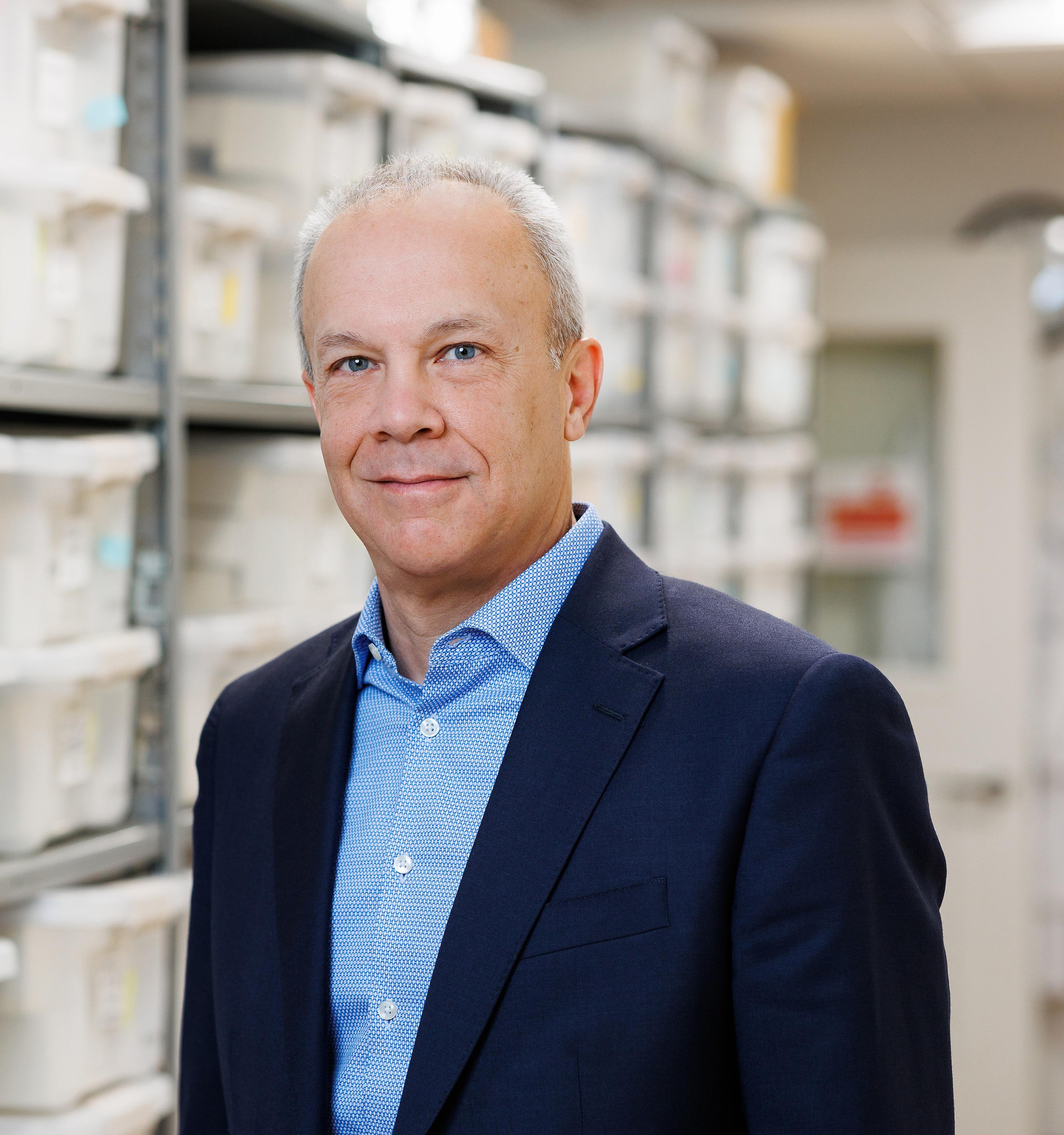
Ron Hester The Issues 79
Doug Leach VP of Device Innovation Hospital for Special Surgery
Hospital for Special Surgery (HSS) has a long history of innovation that has earned it a reputation as the national leader in musculoskeletal health. In the 1970s, its clinical practice and research led to development of the Insall-Burstein Knee Replacement design, which has served as the undisputed standard since.
In 2016, HSS established the Innovation Institute to bring new inventions to the world via commercialization. Today, HSS and the Innovation Institute collaborate with companies, health systems, and others to bring those new inventions and methodologies to patients around the world.
As vice president of device innovation at HSS, Doug Leach works alongside surgeons, clinicians, and other staff to identify, document, and develop the new ideas they uncover as they progress.
“People who work here often innovate as part of their process of delivering the best-quality care in the world,” he says. “And my job is to assess their ideas, and then bring the full resources of this incredible organization behind them to bring the right partners and support on board to drive value for the inventors, the patients, and the organization, as a whole.”
Leach possesses considerable resources upon which to draw. Founded in 1863, HSS has grown to become a nationally ranked hospital with the lowest orthopedics complication and readmission rates in the United States. In addition to its flagship location in New York City, HSS operates facilities in other New
York counties and three other states. It is affiliated with Weill Cornell Medical College and has a research center with twenty laboratories and three hundred staff members.
Additionally, the HSS Education Institute provides training in nearly 150 countries. And, holding the top spot on U.S. News & World Report’s annual list of Best Hospitals for Orthopedics since 2010, it received the Magnet Recognition for Excellence in Nursing Service from the American Nurses Credentialing Center five times in a row.
Leach came to HSS in 2017, just as the organization was building momentum with a new strategic approach to developing intellectual property through a formal institute. “The HSS Innovation Institute was the right move at the right time, because we needed a mechanism to better capture the inventions that had historically either been overlooked or leaked onto the marketplace with little or no recognition to HSS,” he explains. “HSS is an innovation generator, and the Innovation Institute helps bring new ideas to life.”
Strategic partnerships drive these innovations forward. In 2016, HSS entered into a master development agreement with LimaCorporate, an Italian orthopedic implant manufacturer, considered a 3D printing pioneer, to develop a unique elbow prosthesis. As the relationship grew, the team established the first-ever complex orthopedic implant 3D printing facility on a hospital campus: the ProMade Point of Care
80 AHL
The Issues 81
“The orthopedic industry’s innovation model has always been to engage with the surgeon to develop new products. . . . a significant element that you’re missing is input from the key people and functions who surround and support the surgeon on a daily basis.”
Center for Complex Orthopedic Solutions in New York.
This collaboration allows HSS and outside surgeons to use the services of this new facility to design and print custom, patient-specific implants and instrumentation.
“The partnership was a perfect fit, because it combines Lima’s 3D printing expertise with HSS’s knowledge of complex joint replacements to strengthen Lima’s ProMade product portfolio and reduce wait times for the patients who need these sorts of devices,” Leach explains.
Leach brings many years of industry experience to the role. He graduated from Virginia Tech with a degree in biomedical engineering and helped design early knee replacement systems as a project engineer at Stryker Osteonics.
He then spent more than twenty-five years at Stryker in a variety of roles related to its joint replacement business, including expatriate assignments in Ireland and Switzerland. After managing Stryker’s $1.4 billion knee business line, he moved to OrthoSensor, Inc. to assist in the creation of orthopedics devices powered by electronics and software platforms.
Leach leverages this background at HSS and says being embedded at a care provider allows him to reach a new level of results. “The orthopedic industry’s innovation model has always been to engage with the surgeon to develop new products,” he says. “This has worked very well over time, but a significant
element that you’re missing is input from the key people and functions who surround and support the surgeon on a daily basis. I can connect all of those pieces here.” Leach solicits input from physician assistants, nurses, administrators, researchers, communications professionals, and others to build out a new idea or invention.
And these endeavors are having an impact. Since opening its doors, the Innovation Institute has assisted dozens of patents, worked with companies to launch numerous new orthopedic products into the market, and generated millions in royalties and equity for the HSS enterprise. Despite the success, Leach isn’t content to rest—he’s focused on what new advancements can come from data, artificial intelligence, machine learning, sensors, and other emerging technologies.
And he’s betting that, by engaging with the entire HSS caregiving and innovation community, the hospital is in a great position moving forward to set a whole new standard in musculoskeletal care. AHL
Leason Ellis ’ intellectual property practice area focus—patent, copyright, trademark, and litigation—is rooted in a profound dedication to the law; a keen appreciation for inventiveness, creativity, and branding; and a powerful commitment to using IP to help our clients flourish.
Visit www.leasonellis.com to learn more.
PATENT | TRADEMARK COPYRIGHT | LITIGATION www.leasonellis.com
Leason Ellis is a full-service intellectual property law firm with a deep bench of professionals and a collaborative, hands‑on approach.
Leason Ellis congratulates Doug Leach on his recognition in AHL and for his ongoing leadership in medical device innovation.
We proudly support the advancements of HSS in orthopedic care.
82 AHL
The Reason
Some executives feel the importance of their work because they have experienced its impact firsthand. Shaped by their mission to help others or by their personal experiences with healthcare, many executives are drawn to the industry from a sense of empathy and a desire to make a difference for others.
84. Amy Sheldon Case Western Reserve University
88. Michael Kos Memorial Health
83
92. Armond Kinsey Atlantic Health System
Changing Minds About HR
After thirty years working in benefits, Amy Sheldon reflects on changes she’s seen in the field and attitudes about HR that she’s helped to influence
By Donald Liebenson
84 AHL
Only one thing prevented Amy Sheldon from pursuing a career in journalism and following in the footsteps of famed Washington Post investigative reporters Bob Woodward and Carl Bernstein. “I hated writing to deadline,” she says with a laugh.
But a position as assistant editor at Pest Control Technology magazine began her journey from newspapers to computers to benefits. She credits her mother with instilling in her the self-confidence to do anything she wanted. While that may sound cliché now, this was the 1970s, and possibilities for women remained limited. “I remember newspapers split the want ads between jobs for men and jobs for women,” she says.
“I moved away from journalism into computers and ended up as a network manager. You didn’t find too many women in computer science then,” she says. “I came to Case Western Reserve University (CWRU) to perform a temp job working on a survey they were conducting. I impressed the VP of HR enough that they said, ‘We have a position opening in benefits you should apply for.’ When I said I didn’t know anything about benefits, they said, ‘We can teach you benefits. You can handle the faculty.’”
This year marks Sheldon’s thirtieth anniversary of working in benefits—mostly at CWRU. “I was the faculty benefits specialist when I started,” she recalls. “I initially handled the faculty retirement plan. After I started, there was a major change in the retirement plan, which required every faculty member to reenroll. They were forced to deal with me. My predecessor didn’t have a good reputation, so a lot of faculty members weren’t happy with HR. I like to think I changed their minds.”
Sheldon left CWRU in 2005 to serve in the provost office at the University of Akron. But in what she jokingly calls “every ex-employee’s dream,” she was contacted by her former employer to return.
In 2019, benefits was split off, and she became the director of benefits administration at CWRU. Her philosophy is simple: “We’re here for the benefit of all the employees.”
Sheldon’s colleagues outside the university have taken note of her attitude and efforts. “For the faculty and staff at CWRU, Amy has been an invaluable resource,” says Rich Wallack, VP of sales for Medical Mutual. “She’s knowledgeable, helpful, and she knows just about every employee by name. It’s clear that they’re her top priority.”
There’s one drawback to being director of the department, Sheldon says: she has fewer opportunities to consult one-on-one with employees. “I like people,” she says. “The high point of my job is being able to help someone through an issue. Pre-COVID, people used to be wary of walking down the hallway in our building, because I used to tackle them and say, ‘Have you signed up for retirement? You really need to be putting money aside; this is the best thing you can do for yourself.’”
Sheldon, a northeast Ohio native, was planning her own imminent retirement at the time of her interview. As she looked back on the three decades in her career, she recalled some of the societal and cultural changes that have impacted her department.
The Reason 85
“The high point of my job is being able to help someone through an issue.”
According to Sheldon, one of the biggest is the explosion in healthcare costs. “It’s been interesting to try and keep our programs robust, but still affordable,” she says. If she had a dime for every time someone told her “I remember when benefits didn’t cost anything, and there were no deductibles,” she could probably have retired sooner.
When it comes to changes in benefits for LGBTQ families, she says, “Case Western Reserve has always been on the cutting edge. We were one of the first institutions in Ohio to add domestic partner benefits. I actually ended up in charge of that because I was the only one who could figure out how to set up the taxing appropriately. That’s where my computer background came in.”
Most recently, the university’s biggest challenge has been the pandemic. “We are a major research institution,” she says. “You can’t run a lab or train nursing and medical students remotely. Our head of safety went on television to announce we have testing kits in vending machines for students and staff. That’s a unique way to get them out to people. Overall, our vaccine compliance is roughly 98 percent.”
As the pandemic continues, her department’s communications have transitioned online. “We’ve set up webinars, and our orientation for new hires has gone completely online,” she says. “One of the good things put into place is a tool in which you can plug in basic information about salary and healthcare needs and the program will do an analysis on how much each one of our retirement plans will cost.”
Sheldon had a succinct to-do list for 2022: training her successor. Though her thirty years in benefits have served her well, Sheldon’s last day was June 3.
“Every time I got a raise, I raised the amount I put aside,” she says. “And now I am able to retire as I turn sixty-five and have more than enough to enjoy myself. I’m planning many hiking trips for the second half of the year.”
A lesson she passes on to new hires and employees is to use benefits wisely. Sheldon practices what she preaches: she is not taking any time off before her retirement date. “What can I say?” she says. “I want a big vacation payout.” AHL
86 AHL
“My predecessor didn’t have a good reputation, so a lot of faculty members weren’t happy with HR. I like to think I changed their minds.”
Amy Sheldon
Goes Above and Beyond
Case Western Reserve University
Medical Mutual thanks Amy for her dedication to the health and wellness of Case Western Reserve University’s faculty and staff. We are so grateful for her partnership and celebrate her accomplishments.

©2022 Medical Mutual of Ohio MedMutual.com Health | Dental | Vision | Life
Photo provided by Case Western Reserve University
Maintain the Flow
Michael Kos continually strives for greater efficiency and better outcomes at Memorial Health, where he works to streamline its complex revenue cycles
By Frederick Jerant
Michael Kos, vice president of revenue cycle at Memorial Health in Springfield, Illinois, has had a deep interest in science and medicine since childhood.
“I often wondered about the disease process—what causes illness, how it progresses, and how to treat it,” he recalls. “I also had my share of orthopedic injuries and strove to be an involved patient.”
Those experiences kindled a desire to be a pediatrician or orthopedist, and a high-school job at Riley Hospital for Children in Indianapolis fanned those

flames. “I worked with Dr. Kosmas Kayes, an orthopedic surgeon, and he permitted me to scrub up and observe some of his procedures firsthand,” Kos says. “I watched him place Harrington rods in a scoliosis patient. I was amazed to see that patient, who had been wheelchair-bound, actually get up and walk.”
At Indiana University, Kos pursued a grueling path: following the pre-med/ pre-law track, earning bachelor’s degrees in criminal justice and political science, and minoring in Russian and East European and West European
88 AHL

Kara Slating/Memorial Health The Reason 89
Michael Kos VP of Revenue Cycle Memorial Health
studies. He then shelved his medical school dream, earning a master’s degree in public administration at the Paul H. O’Neill School of Public and Environmental Affairs, while completing some of the requirements for a JD at Indiana University’s Robert McKinney School of Law.
Finding law school too rigid for his taste, he obtained a second master’s in accounting through the university’s Kelly School of Business. During his graduate studies, Kos secured his first “real world”
job, as a budget analyst specializing in economic development and technology within the state of Indiana’s Office of Management and Budget.
It was like being thrown into the deep end of the pool.
“I was suddenly involved with nineteen different state agencies, monitoring fiscal matters, reviewing policies and administrative rules, issuing legislative financial impact reports—it was a lot of responsibility for someone of my age,” he says.
Fortunately, his supervisor and mentor was William Bogard, the deputy director of the division. “William was a phenomenal leader,” Kos recalls. “He molded me into a great analyst. William was firm, supportive, and taught me how to be a good partner, how to build teams, and how to use influence to adapt to situations. But he also taught me about compassion and other soft skills. That’s important, because it’s easy to forget that our fiscal decisions will impact actual people; they’re not just numbers on a page.”
Kos met his future wife in the same government building, and her acceptance of his proposal came with one condition. “She told me that if we were going to get married, we’d have to move to Springfield, so she could be closer to her family,” Kos says.
That was all the incentive he needed to apply to Memorial Health in Springfield. A community-based, not-for-profit corporation, it’s one of the leading healthcare organizations in Illinois, dedicated to patient care, education, and research. Memorial’s mission to improve lives and build stronger communities through better health resonated
“Revenue cycle processes are complex. They begin at the moment a patient schedules an appointment and end only when all components of the bill are completely paid.”
90 AHL
with him, providing the opportunity he wanted to serve others.
Another jump into the deep end of the pool.
He joined the company in 2012 as lead analyst in its managed care department. “A fair amount of my existing skills transferred over,” Kos says, “such as analyzing and reviewing data—but I still had to learn all the specifics of managed care and payor strategy. For me, learning comes in stages—you acquire new knowledge, then sort of plateau as you implement it. Then you learn more, and it repeats.”
Over the past decade, Kos’s responsibilities have increased steadily: he was promoted to managed care manager in 2014; director of managed care in 2015; system director of managed care and payor relations system in 2017; and assumed his newly created, current position in 2019.
“Revenue cycle processes are complex,” he says. “They begin at the moment a patient schedules an appointment and end only when all components of the bill are completely paid. My vision is to make the process patient-friendly, efficient, and transparent, so our patients will know Memorial Health is there for them.”
As an example, Kos offers the system’s longstanding partnership with Commerce Bank, its primary financier of patient balances. “Through Commerce, we can offer our patients 0 percent financing, so they can amortize their balances smoothly,” he says. “We can also offer other forms of financial assistance.”
Kos is quick to attribute his department’s success to his ten-person team. “I couldn’t ask for a better crew,” he
says. “We had just connected with a new hospital in Decatur when the COVID pandemic hit. Memorial Health had also implemented a new revenue-cycle system, Cerner Patient Accounting. Despite all those challenges, the team responded tremendously.”

He adds that, at times, he becomes a virtual bystander as his team takes on projects. “They’re so engaged and on top of everything, and they all work together—unselfishly—to execute our goals. It’s been wonderful to watch them grow,” he says.
One of his key initiatives is the ongoing expansion of the revenue-cycle architecture across Memorial Health’s footprint. “We actually have five hospitals in our system, with over seventy locations, and we intend to bring streamlined electronic record-keeping and patient accounting first to our hospitals in Jacksonville and Decatur, and eventually across the entire system,” Kos says.
“We also intend to share resources and colleagues among our locations for greater efficiencies and better outcomes.” AHL
A better
approach to the business of healthcare.
CommerceHealthcare® delivers tailored, ROI-based solutions to identify cost savings, improve cash flow and leverage new opportunities in everyday processes.
• Accounts Payable Automation
• Patient Financing Solutions

• Remittance Process
Automation and Reconciliation
CommerceHealthcare® brings healthcare and banking professionals together to find a better approach.

CommerceHealthcare® is a proud partner of Memorial Health on their HSF® (Health Services Financing) program. We provide health systems automated receivables management and payment services, patient loan financing, and lending solutions. Our team of healthcare and banking professionals understand the business of healthcare and the needs of patients. We can help you find cost savings, improve cash flow, reduce financial risk, and create a better patient experience.
Learn more: commercehealthcare.com
CommerceHealthcare® solutions are provided by Commerce Bank.
WF1157750 CommerceHealthcare American Health Print Ad 2.3x10.2.indd 1 3/10/2022 4:15:35 PM
The Reason 91
Diversity Making a Difference
Three years after launching Atlantic Health System’s first official DEI program, Chief Diversity Officer Armond Kinsey can see the results everywhere he looks
By Zach Baliva
92 AHL
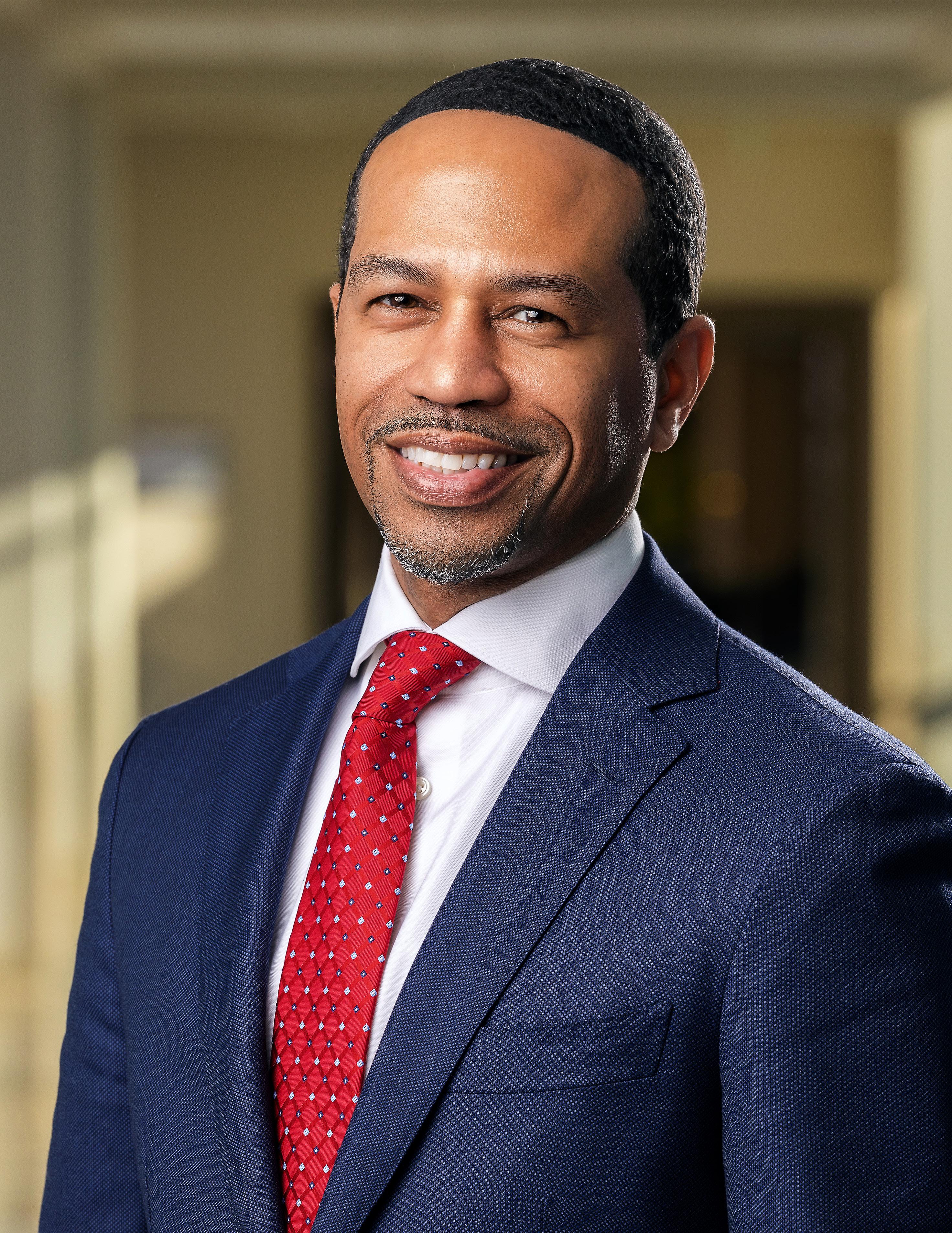 Armond Kinsey
VP and Chief Diversity Officer Atlantic Health System
Armond Kinsey
VP and Chief Diversity Officer Atlantic Health System
The Reason 93
Courtesy of Atlantic Health System
It’s a cold Monday in January, and Armond Kinsey is logging into his computer in New Jersey. While the pandemic has forced many meetings to happen virtually, even at healthcare systems, he’s not joining a work meeting. Kinsey is the organization’s vice president, chief diversity officer, and he’s part of Penn State University’s inaugural Diversity, Equity, and Inclusion (DEI) virtual panel discussion.
A veteran diversity practitioner, he considers the activity an important one. It’s a simple way he can promote his health system as a top regional employer and discuss relevant topics with future healthcare leaders in a respected Master of Health Administration program.
After the session, Penn State’s MHS candidates are quick to share their praise online. “Thank you for joining us and for such a meaningful discussion,” one wrote. “We learned so much from you about your role, and the DEI initiatives you are taking at Atlantic Health System (AHS),” said another.
Among other topics in the virtual meeting, Kinsey discussed the challenges and opportunities related to building a new DEI office. He joined AHS as the system’s first-ever chief diversity officer in 2019.
The not-for-profit organization operates four hundred sites of care, including eight hospitals throughout northern New Jersey. Its largest hospital, Morristown Medical Center, offers top cardiology, orthopedics, critical care, and geriatrics services. Another system facility, Overlook Medical Center, is designated as a comprehensive stroke center.
AHS is known for providing excellent care, but Kinsey says one of his first
concerns focused on access. “Across our country, there’s history in healthcare of inequity in how people receive quality care,” he explains. Kinsey knows the issues firsthand: Growing up in Philadelphia, he lost his mother to heart failure when a junior in college.
“I’ve always wondered if she would have had a positive outcome in a different health system, so I’m committed to making sure everyone who seeks care at any of Atlantic Health System’s locations gets quality care, regardless of race, education, language, or ability to pay,” he says. Kinsey and his team work to certify more bilingual employees and implement advanced technologies to communicate in each patient’s preferred language.
Those comprise just a few overarching goals in Kinsey’s wide-ranging plan. He joined AHS for the chance to layer a broad program on top of an alreadysolid foundation. “We think first about the impact of all we do on our patients and their families, and that has always been true here,” he says. “The executive team understands what emphasizing DEI more can mean for the community.”
Kinsey previously worked as Kaiser Permanente’s chief diversity officer for the mid-Atlantic region and has held similar roles at Korn Ferry and the Children’s Hospital of Philadelphia. When he joined AHS, the organization had a few diversity committees and programs at some of its locations, but lacked a cohesive effort to “pull everything together with momentum and purpose.” Kinsey spent months rounding at AHS facilities to meet team members and create a new system-wide DEI strategy built on patient care, team members, supplier diversity, and community outreach.
94 AHL
The Reason 95
“The executive team understands what emphasizing DEI more can mean for the community.”
Diversity, Equity & Inclusion
Mental Health & Well-Being
Emotional Intelligence & Resilience
Leadership Development
Handling Change & Adaptability
At Blue Ocean Brain, we take a di erent approach to professional development. Our award-winning microlearning is designed to be inspirational, approachable, and actionable. Bringing ongoing learning opportunities to the busy healthcare workforce in the way that works best around the topics that matter most. Learn

In his first twelve months, Kinsey helped his counterparts across the organization understand the business value behind an effective DEI strategy. He was excited to move into his second year to continue the progress— but then COVID-19 hit. Like all system leaders, Kinsey had to pivot and focus his energy on keeping patients and team members safe. He also worked to onboard new team members and guide AHS through the most difficult days of the pandemic.
During the same era, the social and political unrest facing the nation prompted Kinsey to take action. He rolled out a series of listening sessions across the health system designed to create a safe place for interaction and engagement on difficult topics and emotions.
“We don’t expect our employees to leave an important part of their lives in the parking lot, and then try to come through our doors to care for patients,” he says. The organization created nine business resource groups for team members with shared backgrounds to provide further support.
As the pandemic recedes, Kinsey returns his attention to moving his new program past its infancy. With key initiatives in place, he now looks to review important AHS policies. “Our goal is to ensure policies support a diverse and inclusive culture,” he says, adding that his team will help the system review, upgrade, replace, and create new guiding documents as needed.
All of these efforts come together to make a significant impact. When Kinsey is rounding in AHS hospitals, he can observe the changes happening right before his eyes. “You can see the diversity here,” he says. “Our demographics are changing, and we are making a real difference in these communities.” AHL
Fostering diversity, equity, and inclusion is an urgent focus for many healthcare organizations, and the key to its success is their people. Blue Ocean Brain’s modern, bite-sized learning helps you build and support a workforce that embraces inclusion and diversity, both on their teams and in their patient care. BlueOceanBrain.com
Powerful learning designed with the healthcare workforce in mind.
more at blueoceanbrain.com/healthcare
.
96 AHL
“Our goal is to ensure policies support a diverse and inclusive culture.”
The Business
Healthcare is a constantly evolving industry that demands executives to plan ahead. Often, this means business leaders need to address department- or companywide issues to remain focused on driving innovation and devising strategies to maintain a high level of care.
The
Washington
Cipla
Seattle Children's Hospital
Bhandari Lurie Children's Hospital 97
98. Janet Monaco
George
University 102. Deep Sagar
106. Greg Beach
112. Shelu
Creating A Community of Care
Janet Monaco develops personalized benefits and well-being at the George Washington University
By Billy Yost
J
anet Monaco speaks the way you hope your own benefits specialist would. Take the tone with which the director of benefits at George Washington University (GW) discusses the people she serves, the team around her, and her goals for employees—regardless of where they are in their employment journey. Immediately, you sense the care and consideration she puts into her role.
It’s not an attitude that can be feigned, and certainly not one that can be maintained by someone without vast
experience in the benefits space. But in Monaco’s case, her goals and motivations seem free of any career baggage or cynicism that might accumulate over a couple decades. Her servant leadership has only become more conscious and attuned.
“Our goal here is to always lead with care for our faculty and staff, our community, and also ourselves,” Monaco says. “We’re here to support our faculty and staff from their first day through retirement, and it’s a responsibility we take seriously.”
As Monaco has progressed in her career, so has the role that benefits and well-being play in employee lives, increasing exponentially in its scope and definition. The director has helped modernize GW’s benefits structure and meet the evolving needs of its wide constituents. And she’s doing it with a full heart. The director came to GW in 2008 after significant work in the corporate space. Benefits, Monaco says, wasn’t even on her radar until her first boss took a chance on her. The director of benefits
98 AHL
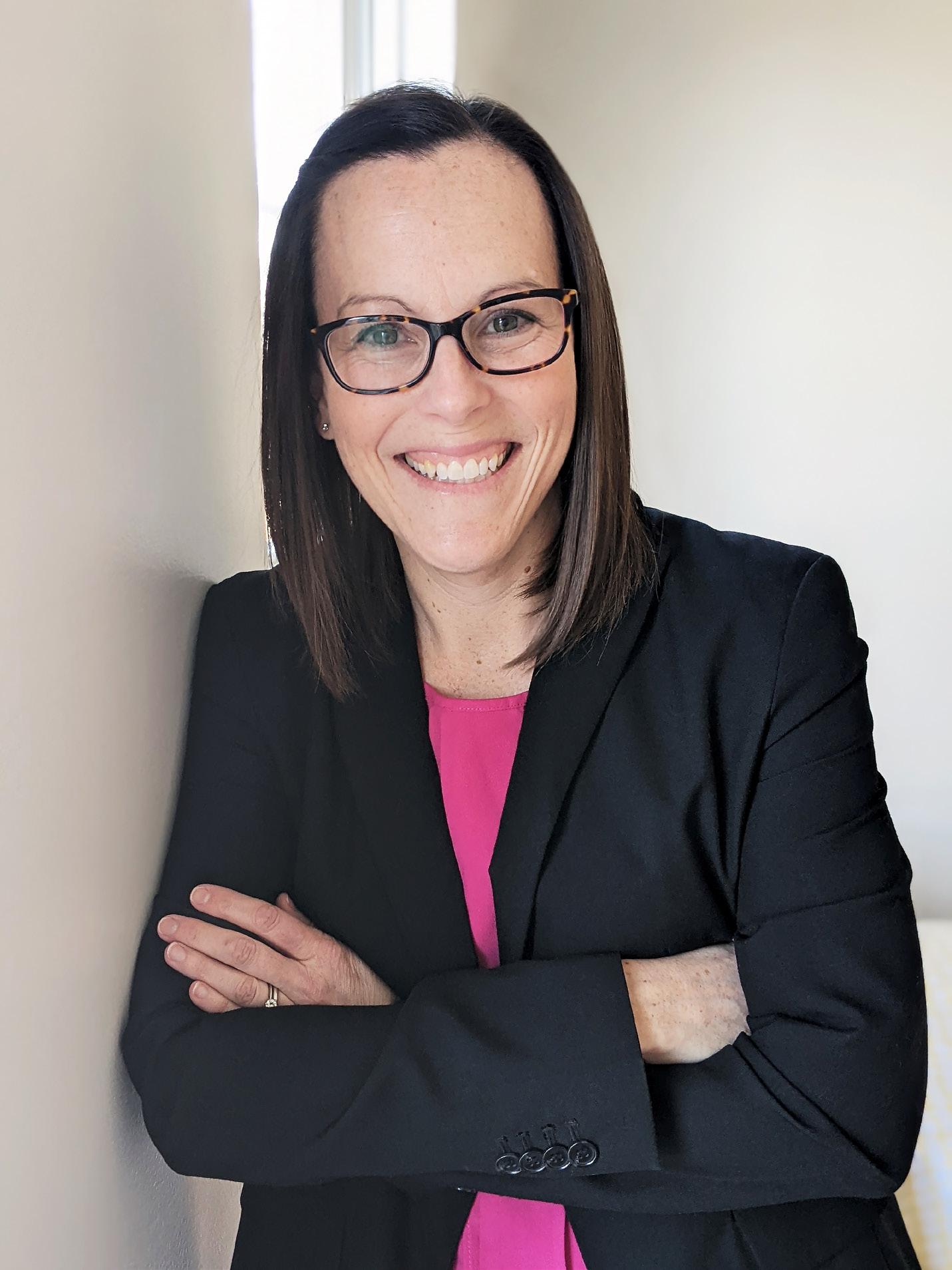 Janet Monaco Director of Benefits
The George Washington University
Janet Monaco Director of Benefits
The George Washington University
The Business 99
Courtesy of GW
credits her role model’s patience, investment, and interest in Monaco’s development as pivotal in enabling her to gain industry experience.
While her first mentor provided an education in benefits, her second demonstrated servant leadership in action. “I can hear her over and over again,” Monaco says, laughing. “I would ask her something, and her response would literally be, ‘Servant leader! I’m here to help you.’ But she meant it. She always said her goal was to grow her replacement, and that has always stuck with me.”
It’s imperative to recognize that Monaco’s own development and compassion is undergirded by tangible accomplishments. Her wide spectrum of talent extends to mergers, sell-offs, multiple request-for-proposal projects, an IPO, and benefits implementations galore. In coming to GW, Monaco saw the opportunity to bring some of the forprofit mindset to the higher-education space. The first move was an obvious one.
“One of the first things we needed to do was to get away from doing our enrollment on paper,” the director explains. “We needed to focus on modernizing enrollment, and the ways in which we communicated for the betterment of our faculty and staff’s experience and engagement with the benefit program.”
The team continually focuses on improving access, outreach, and education for GW faculty and staff, including magazine-style communications that
100 AHL
“We don’t want to add a benefit just to have a new link on our website. We want to fill a need or a gap in our program that we’ve heard from our community.”
incorporate real-life scenarios of benefit applications and suggestions.
Whether they’re working with a firsttime employee focused on saving money, more senior employees trying to understand family benefits, or the intricacies of short-term disability, Monaco says it’s her team’s job to help employees understand how their employer can serve them. And, just as importantly, that her team is there to guide employees through the process.
The benefits space has never seen more legislative overhaul than it has during the COVID-19 pandemic, and Monaco attests to the speed at which her organization has had to move to accommodate changes made to retirement, health, and welfare plans. And her team has worked to make new options available for GW to weather the isolation of the COVID era.
The benefits team launched a partnership with mediation and mindfulness app Headspace in April 2020, just a few short weeks into the pandemic. The positive feedback led to adding Talkspace online therapy to the employee assistance program.
“We don’t want to add a benefit just to have a new link on our website,” Monaco explains. “We want to fill a need or a gap in our program that we’ve heard from our community.”
“Community” is a word Monaco says often. Her team’s goal focusing on creating a community of well-being, most visibly seen through the gWell brand.
This helps connect users with the benefit, health, and well-being choices right for them. And Monaco knows there is no better way to understand the needs of her constituents than to build relationships with those she serves.
The benefits team continues its support through four focus areas: providing a competitive benefits program, enhancing the participant experience, building the aforementioned community of wellbeing, and maintaining compliance.
And while Monaco’s team continues to develop new capabilities, the director places a high priority on her people taking the time they need to be happy and healthy.
“I think, as managers, it’s important that we encourage our teams to step away,” she says. “Especially given the work/life changes we’ve all experienced, it’s so important for people to be able to recharge and take part in selfcare that helps you refocus and come back energized.”
Monaco knows that serving her constituents starts with serving her team. AHL
UnitedHealthcare offers a comprehensive array of consumer-oriented health benefit plans and services nationwide for large national employers, public sector employers, mid-sized employers, small businesses, and individuals. More than 26.5 million Americans rely on UnitedHealthcare Employer & Individual through its fully insured and selffunded medical plans.
b uilt for b e tter Visit myuhc.com® 0047FF5E 01/22 C are Health plans built for lower costs, an easier experience and bet ter all- around health. There’s no limit to what care can do
The Business 101
An
Unmatched Experience
The wide range of international work Deep Sagar does as part of Cipla’s legal team keeps him engaged as the company continues to expand
By Billy Yost
102 AHL
Deep Sagar joined Cipla in 2011, because of the company’s solid reputation. At the time, the multinational pharmaceutical company, one of the most well known in India, wanted to expand its global footprint. But more importantly, Sagar says, his interest really focused in what Cipla does.
“I have parents and elderly people in my family who have relied on Cipla medications,” the legal director explains. “I knew it was a company I could be proud of, and that was one of the key motivations in coming here nearly twelve years ago. I was enthused by the rich legacy of Cipla, and their core purpose of ‘Caring for Life’ was one that I deeply connected with.”
After graduating from India’s prestigious Indian Law Society’s Law College in the top 1 percent of his class, Sagar joined Cipla’s law department—a lean, fourperson team—as legal counsel. But the company edged on the brink of explosive growth.
Just a few short years later, that team rocketed to twenty-five team members and divided into different geographies, providing Sagar the chance to work on international and cross-border transactions for the US, South Africa, and Europe. As his responsibilities increased, Sagar was called to the United States to work on Cipla’s stateside business. It meant leaving India, his home country, and adjusting to life in Florida, where he helped establish Cipla USA as head of legal in 2016. Sagar remembers the transition as difficult, but it also provided him with certain insights.
“I think we can all carry the baggage of where we were born and brought up,” Sagar explains. “We’re so
The Business 103
“I knew it was a company I could be proud of. I have parents and elderly people in my family who have relied on Cipla medications.”
 Deep Sagar Director of Legal
Cipla
Deep Sagar Director of Legal
Cipla
104 AHL
Courtesy of Deep Sagar Courtesy of Deep
used to things being a particular way, but I think we should try and shed those inhibitions and embrace the culture we are in.”
Meanwhile, the company continued to grow. “Now, we’re close to a $500 million company in the US alone,” Sagar says. Along with heading up legal affairs, including contracts, compliance, and litigation, he also works closely with its global intellectual property team.
Asking Sagar what has kept him with the same organization for a dozen years yields an answer as wide-ranging as the lawyer’s responsibilities. “I didn’t ever feel the need to go anywhere else; there have been so many opportunities and challenges within the company that it has always kept me on my toes,” he explains.
“The amount of different work and exposure I’ve gotten at Cipla is, I think, unmatched,” the director continues. “When I talk to colleagues from the industry, they have jumped around a lot to get different experiences. I’ve worked in Europe, South Africa, emerging markets; I’ve done global in-licensing, and now I’m part of our leadership committee. There is the specialty business, and I always get to be involved when we expand into new territories. My hands have been so full with interesting work that I never felt motivated to go anywhere else.”
The business has evolved and grown so much that few employees have the kind of institutional knowledge
Sagar possesses. He’s the go-to not just for legal insight, but for how things have been done at the company over the last decade.
The last year alone is full of high points for both Sagar and Cipla. He proudly notes his negotiation of a license with Gilead for a COVID-19 treatment that helped save lives in his home country, where the pandemic caused particular harm.
Cipla also has had one major product launch this year. Confidentiality obligations prevented Sagar from discussing details, but the company will introduce two generic drugs that will lower costs and increase access for patients, especially in places where the drugs weren’t previously available.
While the last year alone provided a career’s worth of highlights, Sagar isn’t slowing down. Whatever can be done, the lawyer is going to do it. AHL
K&L Gates is proud to partner with Deep Sagar, director of legal at Cipla, a leading pharmaceutical company that provides highquality, affordable medicines in over eighty countries worldwide. In transactions and litigations, Deep leads with a practical, strategic approach to achieve Cipla’s business objectives. For more information about K&L Gates, visit klgates.com
“The amount of different work and exposure I’ve gotten at Cipla is, I think, unmatched.”
The Business 105
Supporting the Front Line
At Seattle Children’s Hospital, Greg Beach has worked to develop innovative supply systems that save time on the front line and provide quality care to patients
By Claire Redden
106 AHL
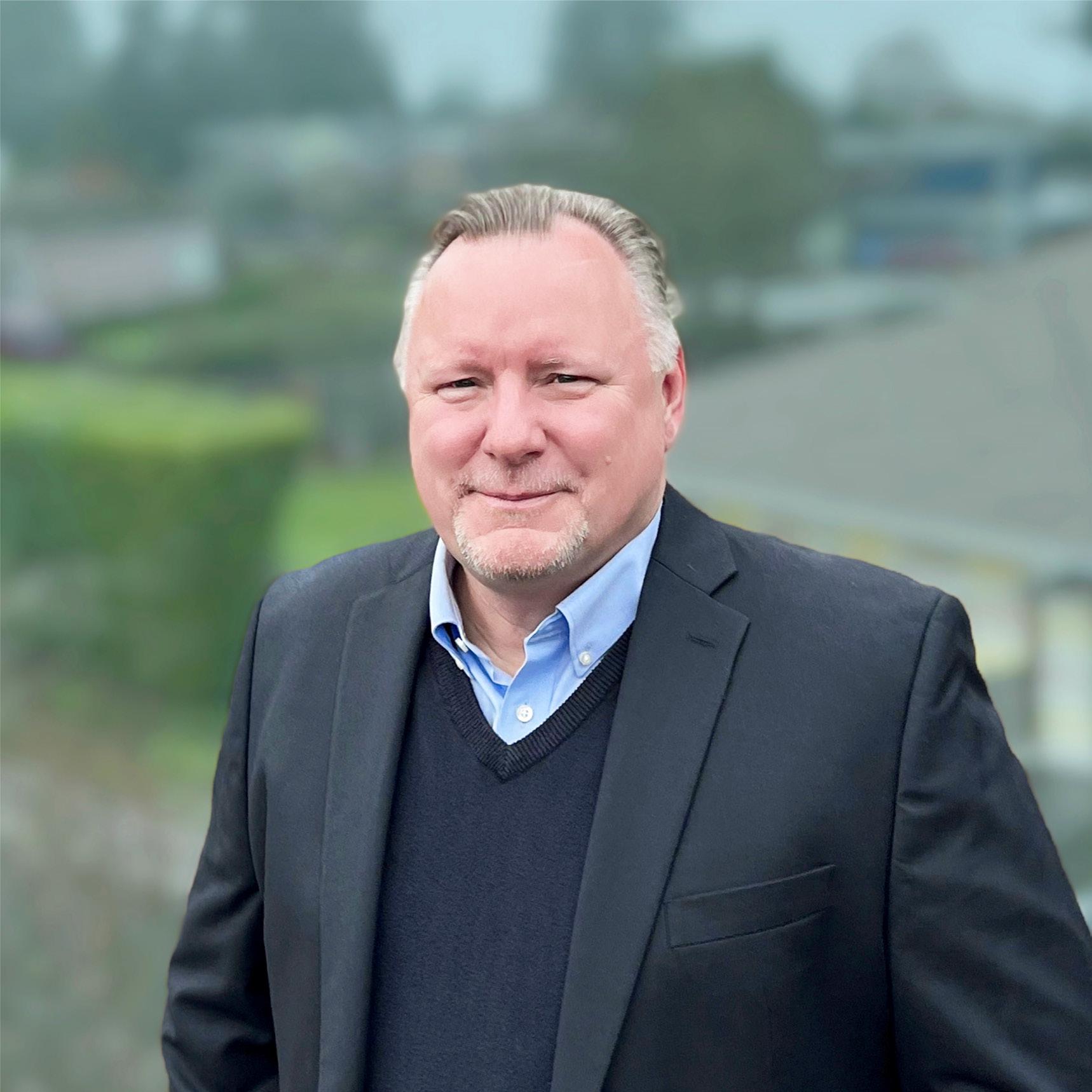
Abigail Beach The Business 107
Greg Beach Chief Procurement Officer Seattle Children’s Hospital
ast year, as the public attempted to gain a new sense of normalcy, supply chain transportation systems around the country struggled to respond to demand from the consumer market. Tied-up shipping containers, backed-up shipping ports, and labor shortages are projected to continue to disrupt supply chains for some time to come. In addition, inpatient surges and supply shortages strike our healthcare systems as the COVID-19 pandemic continues.
“Being in a pediatric hospital, we see children from the size that you could hold in your hands up to large adults—we need to have a variety and range of products,” says Greg Beach, chief procurement officer at Seattle Children’s Hospital.
He oversees all strategic sourcing, sterile processing, inventory, and distribution of supplies and equipment throughout the hospital. Amidst the many challenges of the pandemic, Beach believes in leading teams in a positive and calming way.
“Your team feeds off your style. If you’re calm, it brings a sense of reassurance that we’ll get through this,” he says. Beach’s team-centered mentality, passionate leadership, and commitment to innovation led to Global Healthcare Exchange
naming him one of 2021’s top ten inspirational leaders in healthcare supply.
In addition, Beach’s teams have produced such world-class quality and safety outcomes that Seattle Children’s recognized their teamwork with the David Fisher Award for Excellence in Safety. The hard work and determination of Beach’s group of directors inspires him.
“I love the fact that we’ve built a wonderful team of leaders that are committed to the work and not just coming for a paycheck. It’s always about what’s best for the patient,” he says.
Beach first joined the hospital twenty years ago as the manager of clinical engineering. His transition into supply chain came about organically through his partnership with his executive leaders. After a few years, he stepped in as the director of the inventory distribution team, and later received a promotion to the senior director, before taking on his current role as chief procurement officer.
As Beach rose through the ranks, the department adopted Lean methodology, an evolution of the Toyota Production System. For training, Beach went to Japan for two weeks, where he visited the Toyota production site and other plants that employed the Lean system. Since
L
108 AHL
The Business 109
“My goal is to keep the clinical team in the room, doing what they do best, to support them in delivering care to our patients.”
then, Beach led the transformation of the Seattle Children’s supply chain by applying Lean methods to healthcare to support the hospital’s frontline staff.
needing to search for items. Our goal is to provide the items they need to take care of the patient at the bedside with minimal distractions,” he explains.
In 2008 Beach introduced a new system called Demand Flow, developed in partnership with the clinical teams and built around the needs of the nursing staff. The system has saved more than eighty thousand total system labor hours annually by reducing time spent managing supplies. In the first year alone, they saved $2.5 million worth of supply costs by eliminating unused products.
In 2013, the Building Hope delivery system went live, with a focus on supporting bedside staff. Through a streamlined process called “buses and taxis,” where the team delivered medication, supplies, and equipment directly to the rooms of patients across six floors of the hospital, Seattle Children’s was able to achieve a 50 percent reduction in clinical travel and search time for products.
“My goal is to allow the clinical teams to deliver world-class care to our patients, without the need to search for equipment and supplies,” Beach says.
“What we’re trying to do is eliminate waste in the way we take care of patients, reduce mistakes, and cause no harm. Mistakes happen when you stop what you’re doing and do something else. The clinical teams rely on having the supplies and equipment to do their job without
Beach is excited to apply these systems to the design of a new Seattle Children’s building, which opened its doors in April 2022 after three years of preparation. It includes a Cancer and Blood Disorders Center unit, a pharmacy, laboratory, two floors of operating rooms, and adjacent sterile processing and supply chain areas.
Beach also is looking forward to seeing his team grow. “Seattle Children’s is on a mission—we want our staff and
110 AHL
“Your team feeds off your style. If you’re calm, it brings a sense of reassurance that we’ll get through this.”
suppliers to model our diverse patient population,” he says. Beach has built a team that’s two-thirds minorities and women; half of the leaders also are women or minorities. Beach has most recently hired a new manager of supplier diversity, who will work to align their business needs with women- and minority-owned businesses.
“The increased diversity in our staff and leaders has helped us to look at the way we write policies and to understand that we come from very different backgrounds—not every patient has the same resources or understanding,” he says. “I think it’s compelling to see somebody of your race, gender, or physical ability being successful. It gives people hope that they can be a professional and make the world better.” AHL
Aesculap Inc. congratulates Greg Beach at Seattle Children’s on this well-deserved recognition. Aesculap offers a full range of products and services designed to help hospitals optimize their perioperative performance, identify potential areas of improvement, and help health systems operate with greater precision.

Belimed Inc. is a global supplier of medical and surgical instrument sterilization, disinfection, and cleaning products and services for sterile processing departments. Our integrated sterile workflow solutions include planning and design, marketleading equipment, consumables, servicing, data connectivity, education, and training help protect patients and staff. For more info visit belimed.com.



We are proud of our long-standing partnership with Seattle Children’s Hospital and the work we have achieved together. United by one mission, Greg Beach provides the leadership and confidence it takes to deliver the best medical care and safety for children and their families.

belimed.com
Partners in Success.
Engineers of Confidence. Aesculap, Inc. - a B. Braun company aesculapusa.com OPERATE
GREATER
WITH
PRECISION
The Business 111
Set Up for Success
At Lurie Children’s Hospital, Shelu Bhandari empowers a high-performing supply chain team to meet challenges and competing priorities head-on By
Zach Baliva
112 AHL
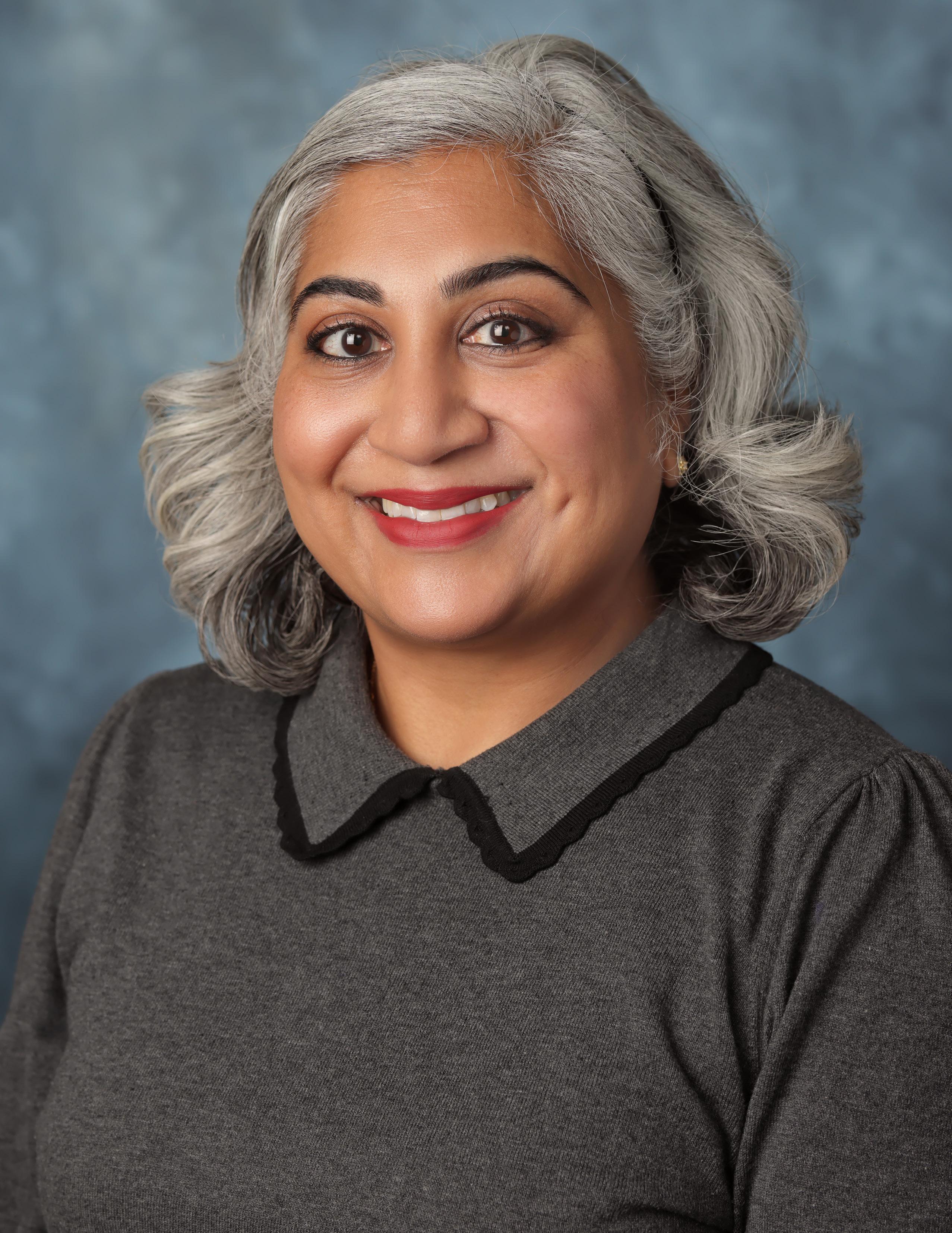 Shelu Bhandari
Senior Director of Supply Chain
Lurie Children’s Hospital
Shelu Bhandari
Senior Director of Supply Chain
Lurie Children’s Hospital
The Business 113
Janice Terry
When I tried to reach Shelu Bhandari to talk about her work as senior director of supply chain at Ann & Robert H. Lurie Children’s Hospital of Chicago, the call went straight to voicemail. Five minutes later, she called back with an explanation. A medical supply company had just issued a voluntary recall for the premoistened antiseptic swabs used to disinfect patients’ skin prior to medical treatment. Lurie Children’s uses about forty thousand swabs per year. Bhandari and her team—like all other healthcare supply chain teams in the country— raced to find an alternative solution.
It’s a look into the new normal ushered in by the global COVID-19 pandemic. Bhandari and her team have encountered challenges related to backorders, killed orders, recalls, discontinuations, shortages, and logistical delays, with more issues seeming to emerge each day. “This is an era that exposes any slight weakness in your hospital’s supply chain, and it’s more important than ever to be diligent and anticipate to get ahead of supply issues, as much as possible,” she says.
Most health systems have a dozen or more substitutes on any given day, and alternative products often require a change in clinical practice. To address the problem, dedicated members of Bhandari’s procurement team work overtime to partner with distributors, discover potential shortages, get extra products into storage, and find options from lesser-known suppliers.
Some organizations in other industries can limit services or wait for supply chain issues to resolve, but Lurie Children’s Hospital enjoys no such luxury. Each year, its 1,800 physicians and care providers treat more than two hundred thousand individual patients aged twenty-one and under, each of whom needs to receive quality care in routine and emergency situations alike.
Founded in 1882, Lurie Children’s has become one of the best pediatric hospitals in the country, and the only hospital in Illinois ranked by US News & World Report in all ten pediatric specialties. It’s the pediatric teaching arm of Northwestern University’s Feinberg
School of Medicine and has a research center devoted to pediatric diseases.
The organization has made some significant changes in recent years. Lurie Children’s was once called Children’s Memorial and located in Chicago’s Lincoln Park neighborhood. It’s since moved downtown to strengthen its relationship with Northwestern, create better synergies, and expand into new communities. Bhandari began her supply chain career at Rush University Medical Center, then worked in KPMG’s healthcare practice for two years, before joining Lurie Children’s Hospital during the pandemic in June 2020.
Since her arrival, she’s worked to assess all parts of internal procurement, logistics, and supply chain operations. After an initial review, Bhandari and her colleagues identified one key bottleneck at the hospital—an inefficient and problematic inventory management system. Inaccurate data overlaid on highly technical point-of-use inventory management systems resulted in failed orders and repeat problems. Bhandari wanted to recommend a total replacement, but encountered resistance due to the hospital’s heavy investment in the legacy automated systems.
The new leader took a step back and engaged KPMG to examine what was failing. “We had essentially thrown a fancy, tech-laden solution at a problem without really understanding the symptoms. It was time to coursecorrect, no matter how much it hurt,” she says.
The study validated Bhandari’s hypothesis and got her the buy-in to implement a counterintuitive system. Her team recommended a simple and manual Kanban system across supply rooms, surgical cores, cath labs, and off-site clinics. The no-frills, low-tech solution is “fast, accurate, and low cost.” And most importantly, it gets the job done.
These early wins helped Bhandari and her team demonstrate the value in their approach, leaving no stone unturned in an ongoing quest for process improvement. “These trying times have highlighted
114 AHL
The Business 115
“We had essentially thrown a fancy, techladen solution at a problem without really understanding the symptoms. It was time to coursecorrect, no matter how much it hurt .”
the value of streamlined supply chains,” she says. “It is more important than ever to work towards improving processes, so we can focus on the critical issues at hand.”
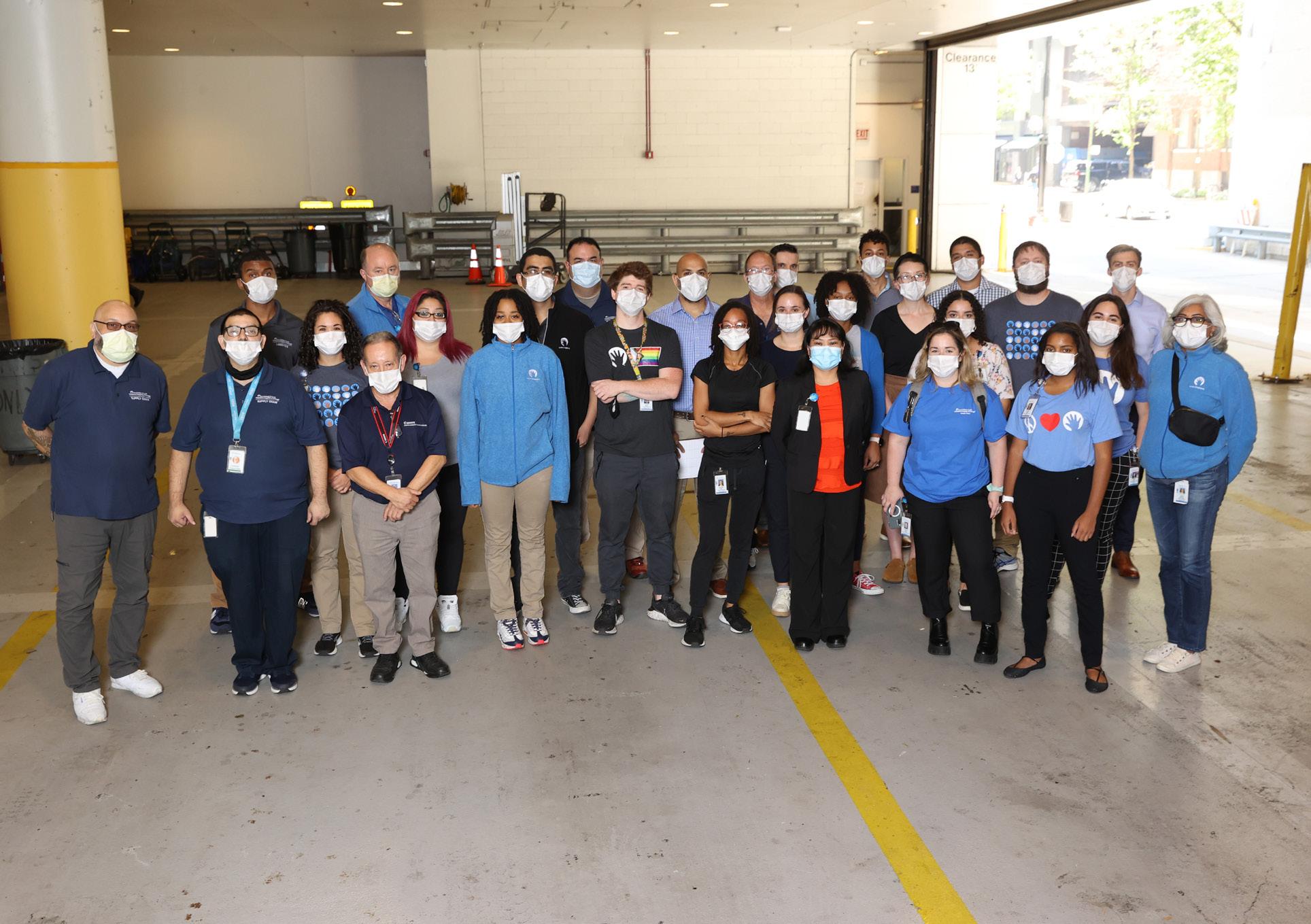
Bhandari knows simple questions with simple solutions can lead to big results. She discovered the hospital was paying in the mid-six figures to store large inventory management systems at a location outside the city. The expensive and inefficient solution existed because no one had stopped to consider the potential roadblocks before deciding to store product at the distant storage facility. Bhandari prioritized dismantling that process to afford the team greater focus on the primary goals: speedy implementation of a simple inventory management solution.
Other critical projects include the transition from a legacy enterprise resource planning (ERP) system to a cloud-based Workday system and other standardizations. Bhandari is restructuring how the organization
collects its data to reduce costs and redeploy employees from time-consuming administrative duties to valueadded tasks. Automated solutions, like the Global Healthcare Exchange, LLC (GHX), and an integration between the ERP system’s item master and the Lurie Children’s electronic medical records system, Epic, will enable faster decision-making and help the hospital get the most out of its new setup.
Bhandari’s colleagues outside the hospital admire her approach to the transition. “Shelu proactively brought GHX, Workday, and KPMG to the table to start the scoping process early,” says Michael I. Bishop, vice president for provider sales at GHX. “This allowed each party to align on the common objectives Lurie Children’s wanted to achieve, as they migrated to Workday's enterprise management cloud. This has been critical in setting them up for a successful cloud transformation.”
Terry 116 AHL
Ann & Robert H. Lurie Children’s Supply Chain team and frontline workers during the pandemic
Janice
Keeping Lurie Children’s Hospital stocked, supplied, efficient, and ready to meet its mission is a big job requiring a strong and dedicated team. Bhandari’s four direct reports—Anthony Moran, Katelyn Storton, Elizabeth Diebolt, and Kori Pomerantz—bring a high level of training, professionalism, passion, and experience to all they do. Their primary desire is to fix problems that arise to ensure clinicians can treat young patients needing care.
Those working on Bhandari’s team don’t usually interact directly with the patients that come through their doors, but their work behind the scenes reduces employee burnout, increases quality of care, and leads to better outcomes.
Lurie Children’s is committed to providing highquality care, serving its communities, addressing health inequity, and pursuing breakthroughs in research. Earlier this year, its radiology and orthopedic surgery specialists developed an innovative and minimally invasive procedure to treat unicameral bone cysts. Teams working in the hospital have completed one hundred heart transplants since 2018. Others in the organization have expanded mental health services, led vaccination events, and formed new partnerships to address the needs of children and their families in Chicago. A strong supply chain helps make it all possible. AHL
Global Healthcare Exchange (GHX) pioneered healthcare’s largest cloud-based supply chain network more than twenty years ago, which today connects thousands of healthcare providers, suppliers, distributors, and other industry stakeholders. By automating key business processes and translating evidence-based data into meaningful action, GHX helps simplify the patient-centered business of healthcare. Its data-fueled platform of technology and services helps healthcare move faster; operate more intelligently; and improve clinical, financial, and operational outcomes. Every year, GHX facilitates hundreds of billions of dollars in global transactions and removes more than a billion dollars of cost from the healthcare industry.
“This is an era that exposes any slight weakness in your hospital’s supply chain, and it’s more important than ever to be diligent and anticipate to get ahead of supply issues, as much as possible.”
The Business 117
Migrating your ERP to the cloud?
Make smart decisions from day one
Successful cloud ERP integration require making smart decisions right out of the gate about system structure and data sourcing. The earlier you make these choices, the more likely you’ll meet your timeline, budget and business goals. GHX has helped lead nearly 70 successful cloud ERP integrations and our experience shows. We understand the people, the software and the processes you need to make this great leap forward.
Learn how GHX can help you ensure a smooth migration to the cloud at GHX.com

©2022 Global Healthcare Exchange, LLC. All rights reserved. GHX is a trademark of Global Healthcare Exchange, LLC.
Shift to value-based care Build supply chain resiliency Improve accuracy in financial forecasting Manage cost-of-care
The Impact
Executives know there is an increasing need to help individuals manage their own health anywhere and anytime.
To do that, healthcare leaders are developing products and services and offering resources catered to different communities’ needs—all aimed at motivating them to stay engaged with their health and empowering them to be their best, at home or at work.
120. Kenya Williams Thermo Fisher Scientific Inc.
126. Patrick Curry Omada Health
130. Leah Klinke West Virginia University Medicine
119
132. Leslie Whitehorne Mako Medical
Triple Threat
At Thermo Fisher Scientific, Kenya Williams uses her degrees in biology, public administration, and law to help the life sciences company protect its valuable brands
By Zach Baliva
120 AHL
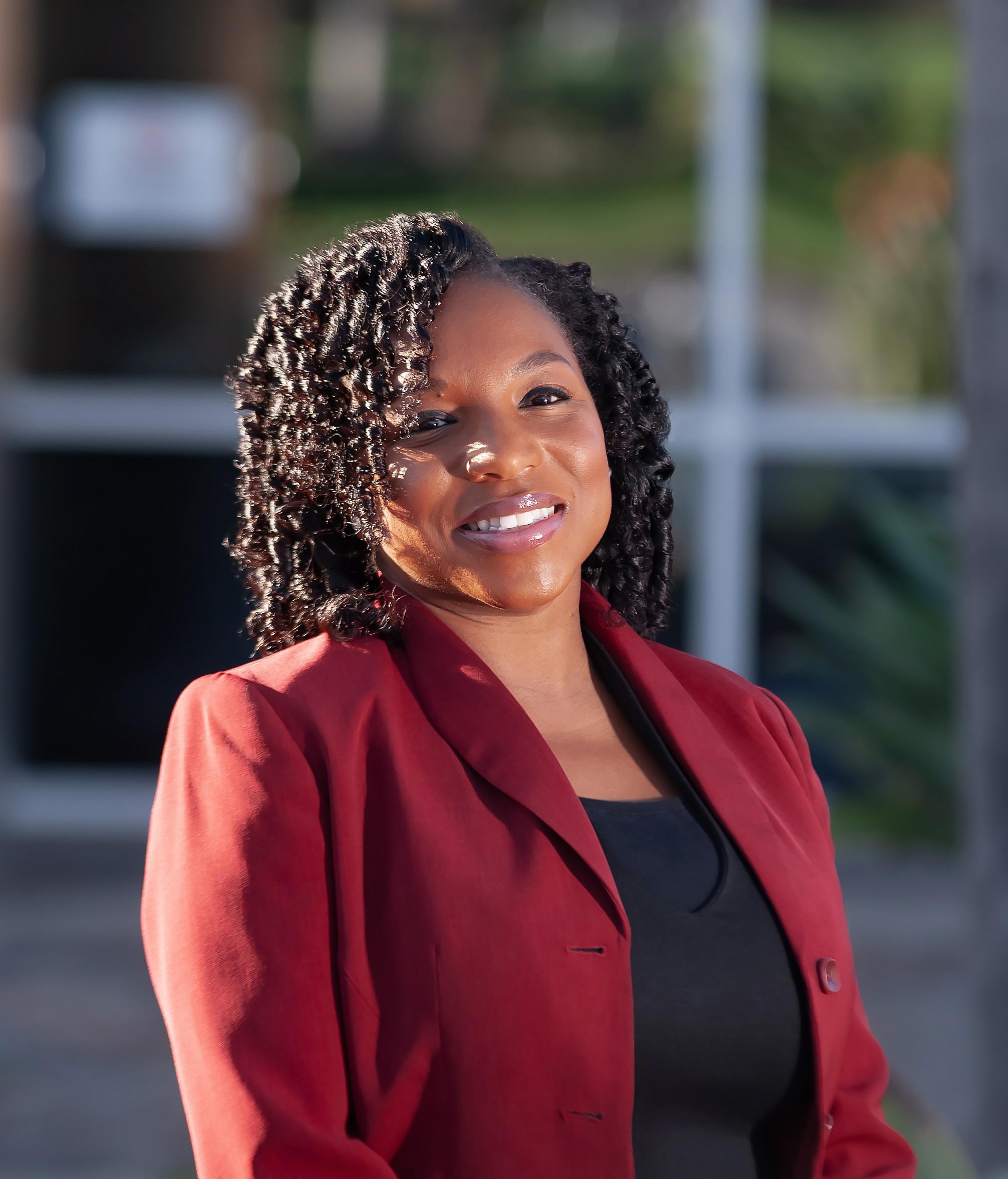 Kenya Williams
Trademark Enforcement Counsel Thermo Fisher Scientific
Kenya Williams
Trademark Enforcement Counsel Thermo Fisher Scientific
The Impact 121
Courtney Jerome Williams
More than twenty years ago, Kenya Williams worked in a lab at University of California, Los Angeles (UCLA). As a recent Stanford graduate with a degree in biological sciences, she was thrilled to be supporting PhD students and a principal investigator, as they researched pediatric bone cancer in pursuit of a cure for Ewing’s sarcoma. As they sent out DNA for sequencing, Williams got her first exposure to the products and services of what would later become Thermo Fisher Scientific. Today, she’s in charge of protecting that company’s brands.
Williams’s career came full circle, when she joined the global scientific instrument, reagents and consumables, software, and services company as its trademark enforcement counsel in 2020. The years between her time at UCLA and Thermo Fisher uniquely prepared her for the role.
After two years in Southern California, Williams moved to Tennessee to pursue a career in medicine, then accepted a full-time position conducting qualitative science education research at Tennessee State University’s Center of Excellence for Research and Policy as an associate investigator. Because the university offered employees free tuition, Williams took a few public administration classes “just for fun” and ended up getting a masters of public administration degree with a certificate in health administration and planning.
That experience opened her eyes to emerging issues in law and policy, so she took the LSAT, enrolled at the University of Miami School of Law, and finished her degree at Whittier Law School.
Upon graduation, Williams started her career as a contract attorney and
eventually landed a position as a trademark and litigation associate at one of the oldest boutique intellectual property firms in Los Angeles. The firm’s twenty attorneys kept Williams—the only trademark associate for much of the six years she spent at the firm—busy. She engaged in extensive trademark and copyright prosecution, dispute management, and litigation, and was an integral member of the team on a trade secret infringement case.
In 2018, Williams moved to Arent Fox to get big firm experience. There, she worked as a trademark attorney and spent two years identifying and prosecuting unauthorized use of her clients’ trademarks and copyrights. She also started collaborating with large clients’ internal teams to identify and execute business objectives related to intellectual property. In 2020, poised to make a change prompted by the pandemic and ready for an in-house role, Williams joined Thermo Fisher Scientific.
As trademark enforcement counsel for the large life sciences company, she heads the team in charge of securing trademark registrations, maintaining Thermo Fisher’s large trademark portfolio, and leading anticounterfeiting measures to help prevent knock-off products from entering the market. As a former scientist, Williams knows that her current work makes a real difference. “A Thermo Fisher Scientific trademark on a product is significant,” she says. “That’s how our customers can feel confident they’re getting a safe, quality product they can trust.”
Consumers might assume that counterfeiting only happens in industries such as retail and fashion, but Williams says it
122 AHL
The Impact 123
“A Thermo Fisher Scientific trademark on a product is significant. That’s how our customers can feel confident they’re getting a safe, quality product they can trust .”
takes place in science as well. “As long as you have a quality product that’s popular in the marketplace, you will attract bad actors who want to profit off of you,” she explains, adding that her team advises colleagues on the correct use of Thermo Fisher’s trademarks and how to help the company maintain strong trademark rights by engaging in active enforcement. Inferior products can ruin experiments and bring damaging results.
customers obtained the correct products to meet their needs. Williams and her team continue to monitor all markets for similar activity.
Top brands like Thermo Scientific, Applied Biosystems, Gibco, Invitrogen, and Patheon drive more than $40 billion in annual sales, and the company sends its products and provides services to many clinical and research laboratories throughout the world. Since 2020, Thermo Fisher Scientific has worked with pharmaceutical companies to provide testing kits and other COVID19 solutions.
As the company expands into new areas and grows its existing product line, Williams leverages her unique background to act as an interpreter between research and development teams, product managers, and company leadership. “I’m trained in science and law, which means I can understand the nuances and intricacies of what we do as a company to develop products and how we then market and bring those products to the public,” she says.
In recent years, Thermo Fisher employees discovered counterfeit products in South Korea after receiving reports of problematic test results. Internal teams investigated and identified multiple customers who’d received fraudulent products from third-party vendors. Thermo Fisher made sure these
Additionally, Williams’s training in public administration and health policy helps her understand the complexities related to a global pandemic response and work with commercial partners to address COVID-19. Thermo Fisher Scientific produced diagnostic tests, in-air surveillance machines, COVID treatments, and other solutions for users in corporate, healthcare, and municipal settings. Williams and her trademark team regularly operate behind the scenes to put appropriate legal protections in place quickly as the company pursues these new endeavors at scale.
A diverse resume gives Williams the ability to contribute to the business, and she’s finding new ways to get involved. “A company’s IP portfolio, including its
124 AHL
“I’m trained in science and law, which means I can understand the nuances and intricacies of what we do as a company to develop products and how we then market and bring those products to the public.”
trademarks, copyrights, and patents, can add significant value and should help guide the strategy for any organization,” she says.



Thermo Fisher’s trademarks team consists of several attorneys and paralegals, who cooperate with brand protection providers and outside counsel to accomplish what other companies do with much larger teams. The set-up affords each person involved a greater opportunity to learn and develop new skills as they encounter unique situations. Williams, who benefited from dedicated mentors early in her career, looks to invest in the company’s more junior professionals.
In late 2021, Thermo Fisher completed the acquisition of PPD Inc., a global company supplying clinical research services to biotech and biopharma industries. The move signals a more concentrated focus on services. Williams is pivoting her team with the company and changing her trademark strategy in response.






With the deal complete, Thermo Fisher entered 2022 as a global company with comprehensive services that work together to improve outcomes and keep patients safe. Moving forward, the company will continue its pursuit of innovative solutions, and Williams and her team will do their part to protect Thermo Fisher Scientific’s trademarks and copyrights in the process. AHL
Appdetex : “Kenya Williams and the entire Thermo Fisher team have been a pleasure to work with to solve their brand protection issues transparent dialogue and clear directives empower the Appdetex team to quickly take action against bad actors, who were taking advantage of Thermo Fisher’s brands.” –Colby Hall, Customer Success Manager
Corsearch
property. Corsearch
businesses
to
trademarks effectively. Corsearch
online & offline brand protection monitoring & investigations. corsearch.com TRADEMARKS & BRAND PROTECTION
gives brands & legal professionals the tools to bulletproof their intellectual
provides leading
with the power
clear, manage & protect their
also offers unparalleled
The Impact 125
A Foundation of Trust
Patrick Curry develops Omada Health’s compliance department and emphasizes the importance of building partnerships to ensure trust between business leaders and his team
By Zach Baliva
Patrick Curry is out to change popular misconceptions. As a compliance professional, he’s heard all of the stereotypes. He’s seen business leaders bristle when he walks into a room. “People think we’re revenue prevention, and they view us as the police,” he says. “We want our business partners to think of us as trusted guides, who can help them reach better outcomes.”
It may be an unconventional thought, but Curry isn’t a conventional leader. Most compliance officers have trained as attorneys. Curry, on the other hand, holds a PhD in history and wrote a dissertation on the formation of female political identity in nineteenthcentury France.
Completing the rigorous program at UC Irvine taught him how to process large volumes of complex data in an efficient way. Curry started his corporate career in project management at General Electric, and later entered healthcare as a senior compliance manager at OTN, before McKesson acquired the company in 2007. After coordinating compliance and privacy diligence and integration for the $500 million deal, he spent a decade building and managing related standards and programs for several group business units.
The experience helped Curry develop the foundation on which he relies to this day. “I was able to watch different people tackle similar problems in different ways,
126 AHL
 Patrick Curry VP of Compliance Omada Health
Patrick Curry VP of Compliance Omada Health
The Impact 127
Rachel Regan
128 AHL
“I wanted to structure everything on trust and relationships, because if business leaders and decisionmakers don’t trust compliance, we can’t be effective .”
and observing a variety of effective approaches taught me a lot and helped me form my own style,” he explains.
In 2017, Curry joined Omada Health to protect the digital care provider as it grew its team, expanded its services, and executed a strategic growth plan. After logging years of experience at a massive global company, he had the opportunity to make his own mark on compliance at an agile and fast-moving start-up. “There was a lot of freedom and encouragement to grow and improve the function in an atmosphere of creativity and collaboration,” he says.
While Omada already had the start of a compliance program in place, Curry moved to emphasize partnership and add formality. “I wanted to structure everything on trust and relationships, because if business leaders and decision-makers don’t trust compliance, we can’t be effective,” he says. After investing time to build rapport and learn about goals and outcomes, Curry focused on early wins.
Partnering with IT, security, sourcing, privacy, care delivery, and product teams to build the right processes and strategies for information governance and document management proved critical in that era. Omada launched a diabetes management program in 2018, hit a thousand customers in 2019, and achieved NCQA accreditation in 2021. Through the journey, Curry’s teams developed guiding principles and consulted on licensures, regulatory audits, and other oversight matters.
These efforts helped prepare Omada Health to deliver on its mission to improve health outcomes for people living with chronic conditions. In early 2022, the company closed a $192 million Series E financing round to help bring treatment to millions more patients across the US. Omada uses the funds to accelerate hiring, personalize care, and invest in development. The mission resonates with Curry and those with whom he works in compliance.
“What we do for the company helps our clinical staff offer the care that improves life for a huge amount of the population that suffers from a chronic disease,” he says. Patients access Omada’s multiproduct platform through their health plans and partner with coaches who leverage insights to produce behavior change.
Each year, Curry and others in the compliance group perform internal audits and test their own performance. The practice, which he learned during his time at McKesson, ensures the team delivers the best value and performance to the company. It’s currently rolling out new tools to gather data regarding effective training and implementation, while investigating new insights on patient safety.
Those activities take up a lot of Curry’s time, but he’s careful to set aside office hours for another important task: listening. He’s made an effort to embed himself and members of his team on project teams and at all levels across the organization. Doing so helps those pursuing developing tech-laden services find new ways to accomplish their goals without compromising patient privacy or putting the company at risk. “We want to teach our colleagues what we do and then listen to their goals carefully,” Curry explains. “That way, when they ask if they can do something, we can almost always find a way to get them to a ‘yes.’”
These practices have brought undeniable results. Curry’s counterparts don’t view compliance as a necessary evil. At Omada Health, it’s a strategic part of the long-term strategy. AHL
Reciprocity is a leader in information security risk and compliance, equipping organizations with the fastest, easiest, and most prescriptive information security solutions in the market today. We’re proud to partner with Omada Health, as they pave the way for a more secure healthcare industry.
The Impact 129
The Robot Revolution
Leah Klinke leads an AI effort at WVU Medicine centered on helping employees find more engagement in their work By Will
Grant
I
n March 2021, West Virginia University (WVU) Medicine announced its ambitious journey to solve some of the biggest administrative challenges for health systems across the country. By focusing on robotic process automation, an “AI workforce” of sorts, the organization is looking to minimize the time its people spend on administrative and repetitive tasks that could be handled by technological solutions.
The journey has been so successful that Becker’s Hospital Review highlighted the organization, presenting a case for
changing to adopt artificial intelligence (AI) and automation, along with highlighting how the successful partnership between the business and IT acted as the key driver for the initiative’s success.
WVU Medicine added the digital equivalent of forty-eight full-time employees, which integrated with its electronic health records to manage repetitive task claims. This increased the organization’s daily claims status checks from four hundred to nearly thirty thousand per day. This exponential uptick allowed WVU employees to put more focus on patient
experience and revenue duties for the organization. Accounts/receivables net days decreased from sixty-five to fewer than fifty after the AI bots clocked in.
“Automation taking over claims work not only has improved efficiency and revenue, but also has improved humans’ work, because they’re not doing tedious jobs anymore,” Vice President and Assistant Chief Information Officer (CIO) Ilo Romero told technology partner Olive. “AI will revolutionize medicine and the delivery of care, and I believe robotic process automation will
130 AHL
enable health systems to stay competitive in the market.”



Along with Romero, Assistant Vice President of Revenue Cycle Leah Klinke, with WVU since 2007, also oversaw the project. In her current post, Klinke remains responsible for driving revenue and optimization strategies across the sixteen-hospital health system.
When American Healthcare Leader spoke with Klinke in 2018, she highlighted having helped transition the company through a rebuilding of the billing department, as well as connecting a tangled web of divisions that needed to get on the same page.

Klinke continues working to reimagine and redefine the responsibilities within the revenue organization with a goal of maintaining as many meaningful jobs as possible. West Virginia often is held up as an example of a place where jobs are lacking, due to the reliance on coal and manufacturing jobs that no longer exist.
The AVP doesn’t want her organization to contribute to that reputation. Both the reduction of repetitive tasks, thanks to automation efforts, and retirement of employees actually led Klinke to actively seek out more talent, with a focus on those possessing more technological expertise.

Partnerships remain key to helping redefine roles and create more meaningful work for Klinke’s people. RevSpring, a patient engagement and payment application company, has been


a partner of WVU’s revenue team for the last ten years. RevSpring digitally manage communications for patient bills, while also using data points to access the priority of the billing prior to sending out any communications.

The progressive investment in technologies allowing employees to focus on higher-level work is a comfortable focus for Klinke, who enjoys leveraging technology to make work better. While this creates the need for more specialized skills on her teams, it also makes for an easier integration of new employees, whose skill sets are readymade for the new roles they’ve assumed.
As Klinke continues to rise in the organization, she says she’s learned to lean on her team for strategy work, as she focuses on broader initiatives and moving her whole organization forward. The transition from strategist to coach has been incremental, and Klinke’s continuing success seems to indicate her evolution will follow suit. AHL
Patient Engagement Everywhere Empower Patients from Pre-Service to Payment revspringinc.com/ healthcare RevSpring proudly partners with WVU Medicine to elevate their patient experience. RevSpring leads the market in patient engagement and payment solutions, backed by behavior analysis, propensityto-pay scoring, contextual messaging, and user-experience best practices. Using data analytics to tailor engagement from preservice to post-service, RevSpring improves the patient experience and outcomes for providers and patients. The Impact 131
Captain of Culture
Leslie Whitehorne overhauls efficiencies and helps her team stick to better and more fulfilling work at Mako Medical
 By Billy Yost
By Billy Yost
132 AHL
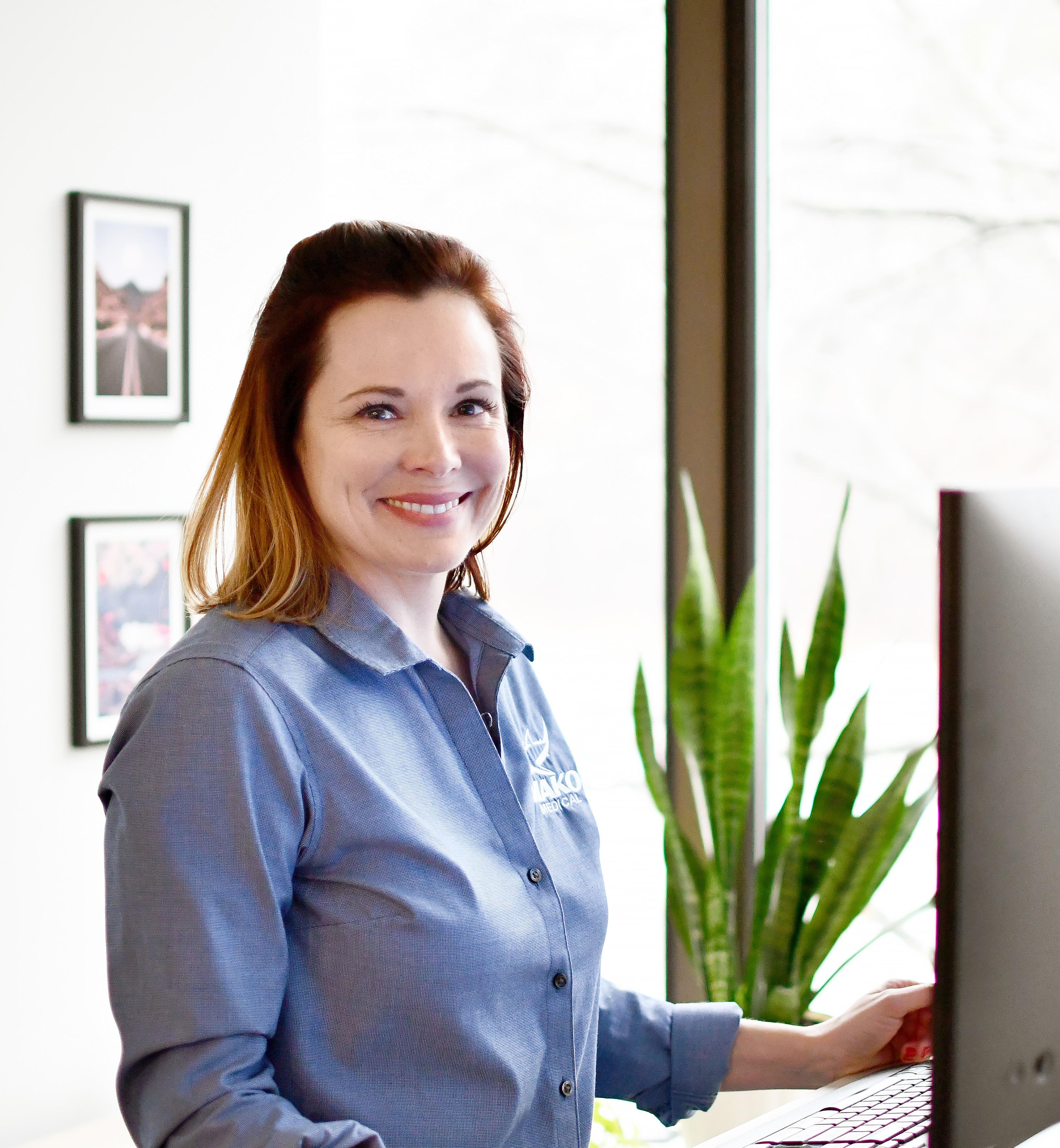 Leslie Whitehorne
VP of Revenue Cycle & Process Management Mako Medical
Leslie Whitehorne
VP of Revenue Cycle & Process Management Mako Medical
The Impact 133
Kristen Bobbitt
When Leslie Whitehorne came to Mako Medical in 2018, she was introduced to the Predictive Index, a behavioral assessment based on sixteen individual profiles that helps leaders better understand their people and people understand themselves. Whitehorne, who has served as the vice president of revenue cycle management and process management for the last year-and-a-half, says her profile wasn’t all that surprising to her.
“My profile is ‘the Captain,’” she says with a cool Carolina drawl. “It’s a person that is a natural leader and tends to have that mentality and mindset. That said, I’ve had some amazing leaders along the way, who have helped me grow and have left such a strong impression by how they treated and encouraged me.”
The strong female leaders the VP encountered early on have had a lasting impact on Whitehorne’s own approach to leadership—and the knowledge that building the right team is the most surefire way to avoid micromanagement. More importantly, though, those women gave her the opportunity to build out expertise in spaces completely new to her.
Whitehorne earned her ‘Captain’ stripes early on in her career when she was tasked with helping build a new lab from scratch. She’d never created an entirely new billing department; she didn’t have that much billing experience period. But she relished the opportunity, learning lessons along the way that would undoubtedly serve her well at Mako.
The VP since architected several large-scale integrations at Mako, introducing new efficiencies and redefining how technology can aid the revenue cycle team. One of them is Availity, a software solutions program geared for healthcare.
“Leslie’s remarkable leadership has made a significant impact in reducing denials and streamlining her revenue cycle processes. Her strategic approach and collaboration with our team to use Availity Essentials Pro analytics tools to spot trends and build processes to address them quickly has yielded great results for her organization,” says the Availity success management team on its collaboration with Whitehorne.
Another is TELCOR, which Whitehorne previously helped integrate into her former lab and has now been able to refine as a system at Mako. “Everything they do is lab-specific,” the VP explains. “They know the lab legislation, and they’re constantly looking for what’s coming next and designing based on that outlook.”
Whitehorne says that TECLOR’s commitment to continued training and payer issues made them an ideal candidate for a partnership with the lab. TELCOR also will be able to integrate with an additional partner, FrontrunnerHC, a leader in patient insurance verification that helps locate insurance information, report back to TELCOR, and automatically update the account.
The goal obviously aims to decrease the amount of time individual employees have to spend tracking down accounts and doing due diligence prior to billing. Leaving time for higher-level work isn’t just good for job satisfaction, it’s good for business.
Whitehorne’s counterparts at TELCOR celebrate the VP’s expertise, as well. “Leslie brings her A game to every new opportunity,” says Kurt Matthes, the VP of reengineering and service at TELCOR. “Building upon her experience as a strong leader with experience across multiple disciplines, she was able to intuitively leverage her team’s talents to overcome barriers and
134 AHL
The Impact 135
“I’ve never seen a company that spent so much time doing service for others . . . . There’s a huge commitment to the culture here and the role we play in the community.”
drive positive outcomes. She is a powerful force in the pursuit of success.”
Whitehorne also looks to the billing department’s future, taking an active interest in future employees that come through Mako’s internship program. Interns can try out multiple jobs within the department to find where their strengths lie and also receive some direction as to how their careers can evolve.
early employment so hard to come by. Not only do Mako interns gain valuable experience, but they might even wind up with a job at the end of the program.
The VP notes the culture of Mako is that of a start-up, despite its growth and expansion. The X factor, though, seems to be the family atmosphere prevalent since Whitehorne’s first day over three years ago.
“I’ve never seen a company that spent so much time doing service for others,” Whitehorne says. “The amount of volunteering, the number of veterans we hire, and everything down to a Bible study group . . . there’s a huge commitment to the culture here and the role we play in the community.”
Whitehorne says the bottom line often is the only line companies worry about, but she says Mako has achieved incredible success, while considering many other issues as vitally important to company accomplishment.
That focus on culture remained more important than ever during the pandemic, and Whitehorne emphasizes that Mako’s leadership has done everything it can to make life as flexible for parents and caregivers as possible. A single mother, Whitehorne knows firsthand the challenges that accompanied school shutdowns and upset schedules, and she herself forwarded the need to bend wherever possible.
The program has multiple upsides. “We’ve hired so many interns over the years that have turned into great employees,” Whitehorne says. “They’re eager to learn and progress. Even if we don’t get to keep them, I think the program here is a strong one that provides some amazing experience.”
Whitehorne empathizes with the interns: she remembers the challenges she faced early on in her career, where she wanted experience, but job listings required the very experience she sought. The internship program remedies that catch-22, which can make
Whitehorne helped weather the COVID era by keeping her office door, virtual or otherwise, open to whoever needs it. She’s not just a natural leader when things are good. Whitehorne is a captain for all seasons. AHL FrontRunnerHC congratulates Leslie Whitehorne on this welldeserved recognition! We’re honored to partner with Leslie and Mako Medical to support their mission and success. Our software platform provides instantaneous access to patient demographic, insurance, and financial information to help organizations get paid for their services, while enhancing their patients’ experience. FrontRunnerHC.com
136 AHL
“We’ve hired so many interns over the years that have turned into great employees.”
People & Companies
A Adams, Mark 72 athenahealth 68 Atlantic Health System 92 B Beach, Greg 106 Beales, Amy 44 Bhandari, Shelu 112 C Carnegie Mellon University 54 Case Western Reserve University 84 Celsius Holdings 28 Children’s National Hospital 44 Cipla 102 Curry, Patrick 126 G George Washington University, The 98 H Herron, Andrea 34 Hilton 10 Hospital for Special Surgery 78 J JPS Health Network 40 K Kennedy Jr., Jack 54 Kinsey, Armond 92 Klinke, Leah 130 Kos, Michael 88 L Leach, Doug 78 Lurie Children’s Hospital 112 M Mako Medical 132 Mazumdar, Amanta 10 Memorial Health 88 Monaco, Janet 98 Murphy, Denise 17 N Nicholson, Sarah 68 O Omada Health 126 P Poe, Lauren 40 R Rader Co. 22 Rader, Marcey 22 Roche Diagnostics 50 S Sagar, Deep 102 Sandifer, Marcus 28 Seattle Children’s Hospital 106 Sheldon, Amy 84 Subramaniam, Suja 50 T Texas Christian University 62 Thermo Fisher Scientific 120 U University of Notre Dame 17 W WebMD Health Services 34 Weill Cornell Medicine 72 West Virginia University 130 Whitehorne, Leslie 132 Whiteley, Michelle 62 Williams, Kenya 120 Contents 137
TOP 10 Wellness Trends in 2022
4. Guidance and direction regarding all things finance
3. Benefits personalized for the individual and not one-size- fits-all
1. Pet perks that consider our furry families
2. Community care and participation in meaningful social events and experiences
With wellness initiatives increasingly prevalent in the workforce, employees are having more honest conversations with their employers about personal needs.
5. Room to work with greater autonomy, flexibility, and/ or remotely
6. A little understanding and help dealing with our mental health
7. Coaching and support to help us lighten the parenting load
8. On- and off-site fitness and nutrition accommodations and allowances that get us moving
9. Opportunities, resources, and mentorship that develop our critical cross-training and soft skills
10. A shoulder to help us bear educational and personal development costs
Sources: SHRM 2020, Gartner 2020
Sasha
Turkina/Shutterstock.com
138 AHL
Drive Laboratory Revenue Cycle Management with Real-Time Analytics



With TELCOR RCM, laboratory executives have complete, real-time access to revenue cycle management analytics to identify trends, measure productivity, and effectively manage your business.
Make smart contract decisions by identifying payer payment trends.
Effectively balance people resources by understanding billing team productivity.
Ensure operational metrics are being met with access to key performance indicators.

Quickly see status of all appeals to determine overall success of appeals process.
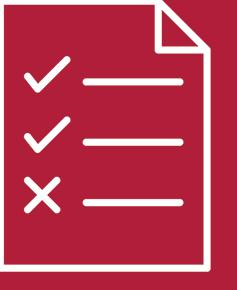


more.
USA 855-489-1207










telcor@telcor.com






TELCOR®
Discover
Discover TELCOR.































 Denise Murphy Senior Director of Compensation & Benefits University of Notre Dame
Denise Murphy Senior Director of Compensation & Benefits University of Notre Dame


 Marcey Rader
Founder and President Rader Co.
Marcey Rader
Founder and President Rader Co.


 Marcus Sandifer VP of Business & Legal Affairs, General Counsel, and Corporate Secretary Celsius Holdings
Marcus Sandifer VP of Business & Legal Affairs, General Counsel, and Corporate Secretary Celsius Holdings












 Amy Beales
VP of HR Talent Management
Amy Beales
VP of HR Talent Management



 Jack Kennedy Jr.
Assistant VP of Benefits & Compensation Carnegie Mellon University
Jack Kennedy Jr.
Assistant VP of Benefits & Compensation Carnegie Mellon University

































 Sarah Nicholson
Former VP of Total Rewards athenahealth
Sarah Nicholson
Former VP of Total Rewards athenahealth
 Mark Adams
Senior Associate General Counsel
Weill Cornell Medicine
Mark Adams
Senior Associate General Counsel
Weill Cornell Medicine

 By Zach Baliva
By Zach Baliva







 Armond Kinsey
VP and Chief Diversity Officer Atlantic Health System
Armond Kinsey
VP and Chief Diversity Officer Atlantic Health System

 Janet Monaco Director of Benefits
The George Washington University
Janet Monaco Director of Benefits
The George Washington University
 Deep Sagar Director of Legal
Cipla
Deep Sagar Director of Legal
Cipla






 Shelu Bhandari
Senior Director of Supply Chain
Lurie Children’s Hospital
Shelu Bhandari
Senior Director of Supply Chain
Lurie Children’s Hospital


 Kenya Williams
Trademark Enforcement Counsel Thermo Fisher Scientific
Kenya Williams
Trademark Enforcement Counsel Thermo Fisher Scientific









 Patrick Curry VP of Compliance Omada Health
Patrick Curry VP of Compliance Omada Health








 By Billy Yost
By Billy Yost
 Leslie Whitehorne
VP of Revenue Cycle & Process Management Mako Medical
Leslie Whitehorne
VP of Revenue Cycle & Process Management Mako Medical






















